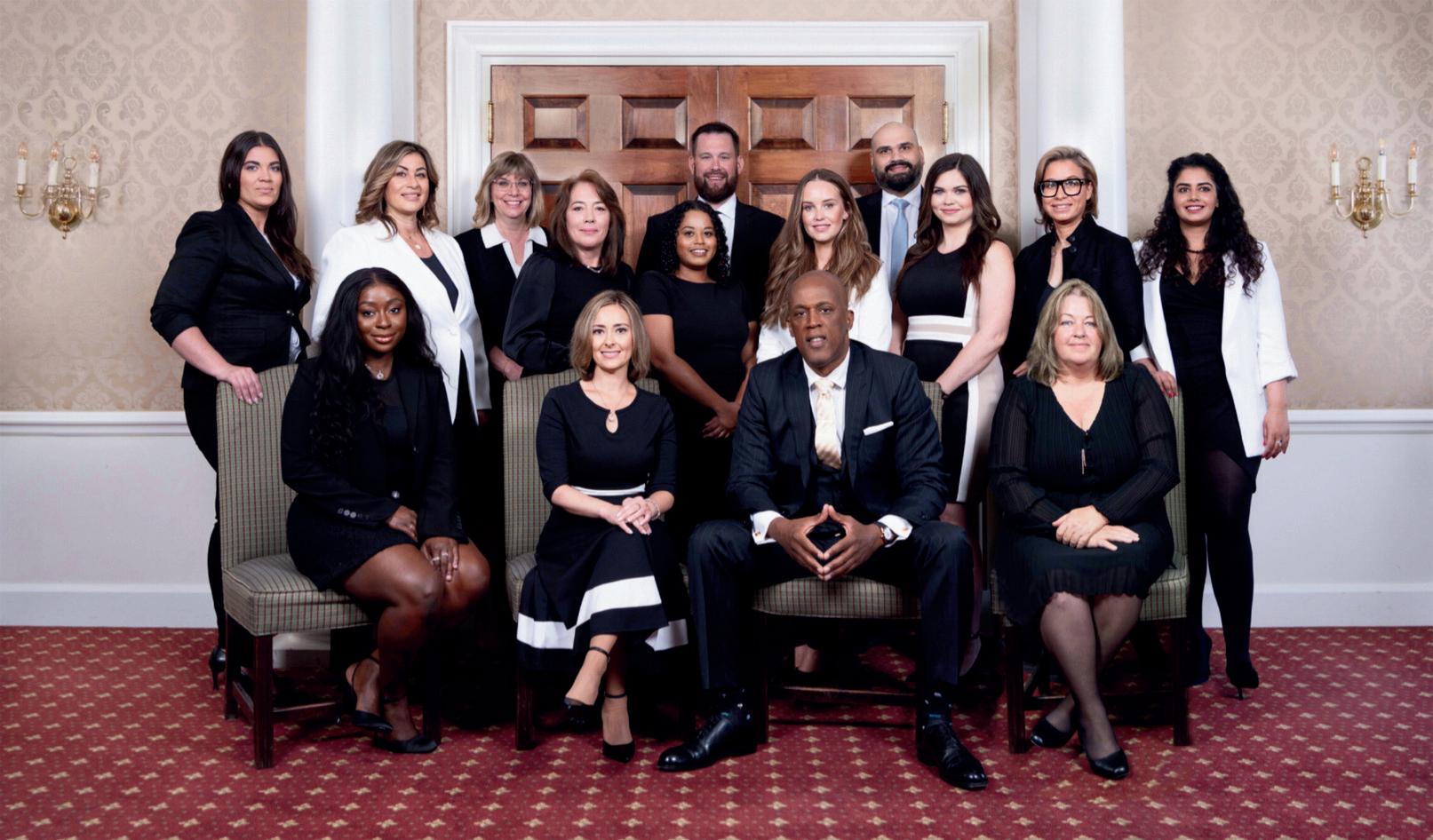Growth and gain: Preparing for a bigger city

The art of conversation: Connecting has never been more critical Entrepreneurs needed to fill local market gaps






















Growth and gain: Preparing for a bigger city

The art of conversation: Connecting has never been more critical Entrepreneurs needed to fill local market gaps





















, our goal is to provide comprehensive audiological assessments. From the results of these assessments, we will educate, and inform our patients so they can make an informed decision about their hearing needs.
Your story is our priority, we’re here for you!



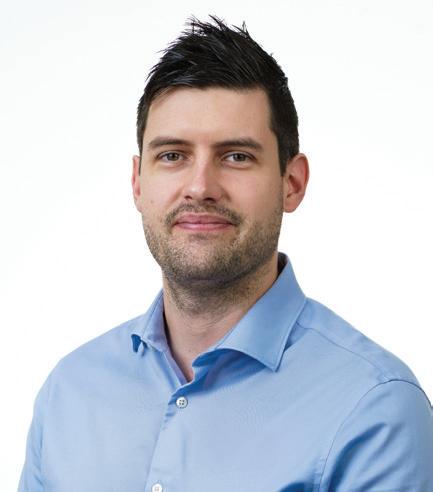





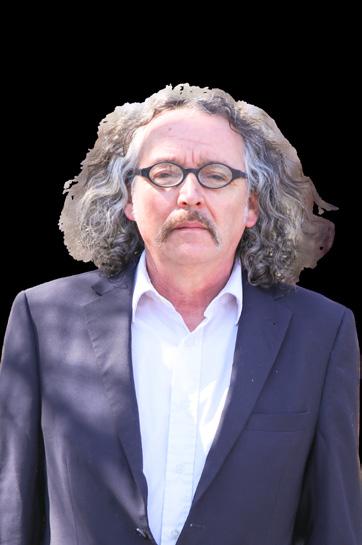




Please send editorial inquiries to Roderick Benns at roderick@lindsayadvocate.ca or 705-341-1496.
Please send ad inquiries to Darren Hoiting at 705-991-3188 or darrenhoiting@outlook.com, or to Cara Baycroft at 905-431-4638 lindsayadvocate.ca • @lindsay.advocate

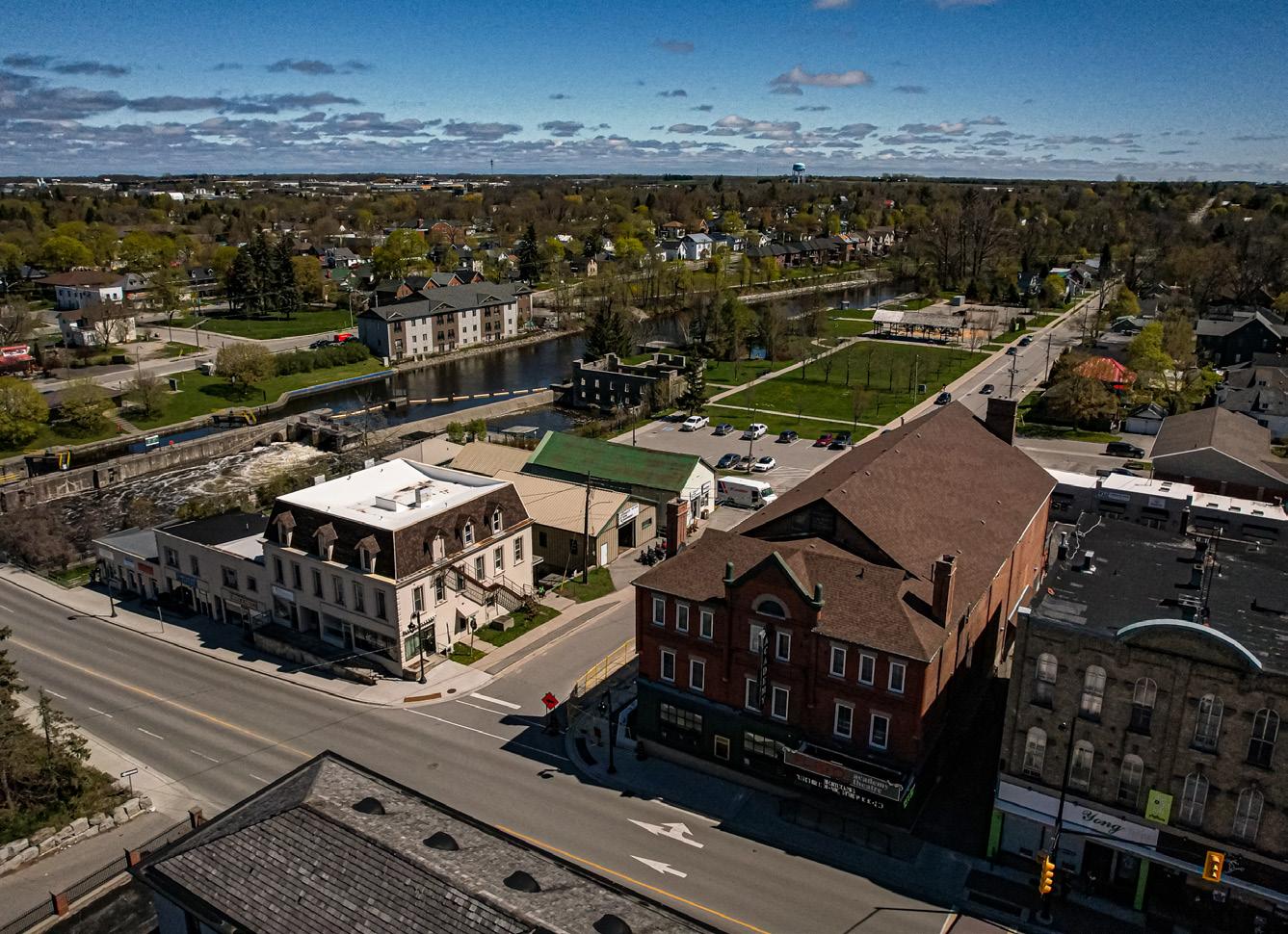
Lindsay is set to see incredible growth. That means there are many business opportunities. Photo: Kestin York.
A bigger city means pressure on local services — and growth is coming quickly.
Conversation and connection is critical to stave off loneliness and depression. Has it become a lost art?
Emily Township provided a new life for the Sullivan family after they left Ireland in 1825.
our mission
Fireside Publishing House is the premier print media company in Kawartha Lakes through its family of magazines and all-local weekly newspaper. We believe that community-based media can bring people together and change lives for the better through the power of storytelling, reflecting local culture, and creating informed and engaged citizens. Our commitment is to deliver high-quality and relevant content that reflects the diverse voices and experiences of our communities. We believe in the transformative power of local media to inspire, educate, and empower.

I’ve appreciated The Lindsay Advocate’s recent focus on landscaping and climate through the Cool Tips for a Hot Planet column. These are vital conversations, and as someone involved in sustainable turf management through our local, family-owned lawn care business, I’d like to offer a complementary perspective rooted in science and practical, local experience.
Well-managed lawns, when maintained with intention and responsibility, can play a beneficial role in our communities. This includes capturing carbon, preventing soil erosion, reducing surface temperatures, and improving soil structure. Not all lawn care is harmful. Our company, like many others across Ontario, uses slow-release fertilizers applied in small, timed amounts to support healthy root systems while minimizing runoff and environmental impact. These methods align with research from the Guelph Turfgrass Institute, which supports science-driven strategies to protect both plant and environmental health.
The idea that organic fertilizers are the only ‘green’ option doesn’t hold up under scientific scrutiny. Whether organic or synthetic, all fertilizers depend on soil microbes to break them down before plants can use them — a reminder that responsible application matters more than the brand or label. University of Guelph research confirms this, while also noting that organic products often require higher application rates — leading to increased transportation, packaging, and energy demands.
Agriculture alone accounts for the vast majority of nitrogen fertilizer use worldwide. Redirecting scrutiny toward local homeowners or small, regulated lawn care businesses can distract from holding major emitters accountable. Responsible lawn care and environmental stewardship are not at odds. When guided by research, regulation, and local knowledge, they can and should work together.
— Shannon Coates, Weed Man Kawartha Lakes, Peterborough & Port Hope
Roderick Benns’ column in the May issue of the Advocate (Benns’ Belief: “Becoming a Better Human”) is surely a worthy aspiration and should be at the heart of all good journalism. And, by telling stories of local initiatives, the Advocate plays its part in encouraging us to foster community.
The problem is that Benns’ column places too much hope in technology, specifically AI, to free us from “the tyranny of the everyday,” thereby “allowing us to engage in activities that cultivate our human spirit.” It seems to me there is no evidence from history that advances in so-called time-saving technology correspond to the creation of better humans. Indeed, advanced technology can just as easily facilitate dehumanization and the crushing of the human spirit. Think of Nazi Germany, think of nuclear weapons, think of drone warfare.
But it is in the denigration of the “tyranny of the everyday” that Benns gets it most wrong. His hope is that we might be able to “offload routine and mundane tasks” to AI so that we would have the “gift of time” to pursue such a vision of the better human. The problem is that it is precisely in the everyday tasks of shared life that our character is most profoundly formed.
Let’s take the everyday technology of the dishwasher. Has the dishwasher made us better humans? I doubt it. In fact, it seems to me the removal of dishwashing from a family chore to a mechanized operation has been detrimental to family life, releasing children from a meaningful contribution to family day-to-day rituals.
We know what makes for better humans. We saw it during the pandemic and after the ice storm. At its best, we bear witness to the cultivation of better humans in the stories told in the pages of the Advocate. It is in folks bringing home cooked meals to neighbours without power. It is in the drudgery of cleaning up after a storm. This is all being better humans, and AI has precious little to do with it.
I’m sure that Benns will not be giving up to an AI application the drudgery of coming up with a column every month. No, he becomes a better human, and we benefit from the cultivation of his journalism, in the day-to-day, often mundane task of crafting words to produce pieces that just might engender interpersonal responses like this one.
— Brian Walsh
Technology has already enabled us to have more quality time with one another. Families travel more. We have time for leisure activities like a game of tennis or a long walk with a loved one. It’s true that we cannot count on AI – or any machine – to make us better humans. But my enduring sense of optimism tells me we’ll learn along the way how to best care for one another, even with emergent technologies.
–Roderick Benns
Just picked up an issue of the May Advocate – the feature on Globus Theatre and our ad look excellent. We’re always impressed with your publications and this one hits the mark once again.
— Rebecca Anne Bloom, General Manager, Globus Theatre, Bobcaygeon
Thanks to the Advocate for this outstanding article – Japan Calling. And thanks to local music educator and friend, Jim Brown, who being very active in the twinning committee, encouraged us to be a host family. And not having had the privilege of meeting Mark Hamilton, the subject of the article, we thank him for sharing with us his personal life journey. And can you believe Mark’s first Japanese friend in Lindsay, Hiroshima Hasumuni, was also the student we hosted for a week in northern Kawartha Lakes? The many fond memories created at that time still prompt us to wonder where Hiroshi’s life journey took that phenomenal young man. We would love to hear from him again.
— Hugh & Ruth Armstrong, Burnt River
The Advocate welcomes your letters. We do not publish anonymous letters unless it’s a matter of public importance and/or someone risks harm by writing us. We publish under strict guidelines & only if we can verify the person’s identity. Keep your letters to 200 words or less. Simply email: roderick@lindsayadvocate.ca.
How do roads get repaired in Kawartha Lakes?
Check out this Q&A with Director of Engineering and Corporate Assets, Juan Rojas to learn how we manage our network of over 2,600km of roads using our road programs.
What road programs are there?
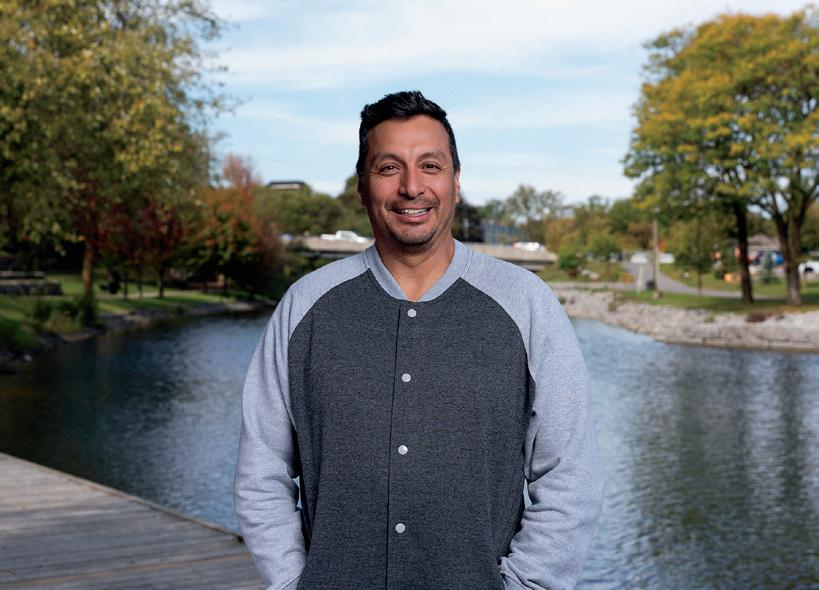
Juan Rojas
We manage our roads through two main road programs in the Capital Budget: Resurfacing or Reconstruction Projects and the Lifecycle Management Program
What are Resurfacing or Reconstruction
Resurfacing and Reconstruction Projects are carefully planned and include specific roads listed in the City's 5-Year Roads Plan. These projects are based on a Roads Needs Study that identifies road repair priorities. The program is divided into four categories:
Gravel Resurfacing (2025 Budget: $2.1M)
Rural Resurfacing (2025 Budget: $6 9M)
Urban/Arterial Resurfacing (2025 Budget: $8 4M)
Urban/Rural Reconstruction (2025 Budget: $19 2M)
How does the Lifecycle Management Program work?
The Lifecycle Management Program helps maintain roads not covered in the 5-Year Plan, especially after winter damage. Every year there’s a list of roads that get treatments like:
Asphalt Rejuvenation (extends the life of newer roads)
Local Asphalt Paving (spot repairs or full overlays)
Slurry Sealing (adds a new layer to low-volume roads)
Crack Sealing (prevents road deterioration)
The municipality prioritizes roads based on current condition, maintenance needs and long-term plans. For a list of all the roads included in the 2025 programs visit:
www.kawarthalakes.ca/Roads

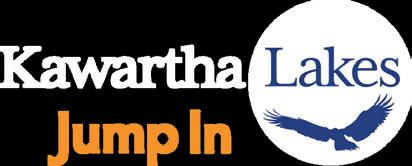
Won’t you join our supporter’s list?
The Advocate and Kawartha Lakes Weekly are your 100% local print media choices based in Kawartha Lakes. Visit our website and choose Support Us, or contact 705-341-1496 or roderick@ lindsayadvocate.ca. We thank the following people for their support:
Alan Gregory, Al Kingdon, Anne Melanson, April Scott, Audrey Burrows, Barb Taylor, Bill & Heather Peter, Bob & Carol Barkwell, Bruce & Debbie Peck, Cam Finley, Carol Bryans, Carol & Brian Kelsey, Catherine Hennings, Christine Wilson, Colleen Newson, Cordula Winkelaar, D Ann Ostafichuk, Dale Urekar, David & Margaret Robertson, David Holloway, David MacMillan, Deborah Smith, Doreen Amos, Don Sangster, Donna Gushue & Jim Buchanan, Drew Davison, Edith Wood, Edna Calhoun, Elaine Heyes, Eileen MacDonald, Elizabeth Anne Patterson, Elke Danziger, Ellen Roberts, Gail Motzok, Garth & Marian Mackay, George Meyer, Glenda Morris, Grace King, Hannah Marnoch, Heather Muir, Hilary Grice, Jack Kyle, Jane Porter, Jane Walling, Janet Smith, Jean Wood, Jeremy Kraemer, Jim Buchanan, Joan Shippel, Joanne Young, John & Elizabeth Gundy, John & Pauline Hunter, Joyce Dunning, Kevlyn Given, Laurie Jones, Lauren Drew, Lee Steeves, Leslie King, Linda Friend, Lorna Green, Lynda Palmer, Mike Vanderburg, Marci Stainton, Margaret Anthony, Maria Bennett, Marie Geelen, Marie-France Leclerc, Marnie Nelles, Maureen Kalmykow, Maurice & Marie Jackson, Mehran Qaaboos, Mike & Cathy Puffer, Nanci Byer, Neil Campbell, Nelson Gingrich, Nora Steffler, Norma Downes, Norman & Molly Feldman-Swan, Patricia Apac, Pamela Burtt, Paul Skipworth, Peter & Kathy Anderson, Peter & Sandra MacArthur, Ray & Lorna Smith, Ron & Claudie Chartrand, Ross & Susan Beattie, Sandra Scott, Sharon Tracy, Shirley Harnden, Susan Ferguson, Susan Gleeson, Susan Stitt, Tegan Osmond, Vickie Schuett, Viona Smith, Wanda Percival, Wayne & Cathy Alldred, Wayne Alldred, William Steffler, Zita Devan


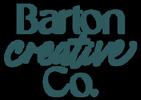
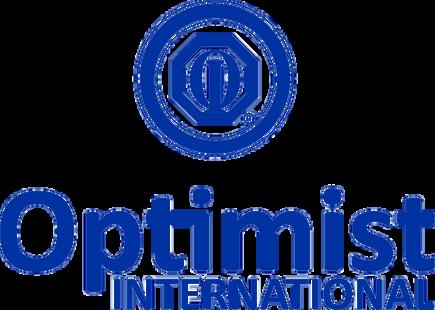



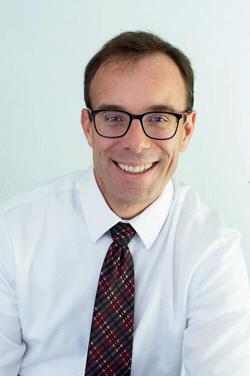
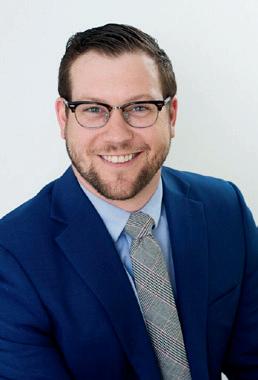

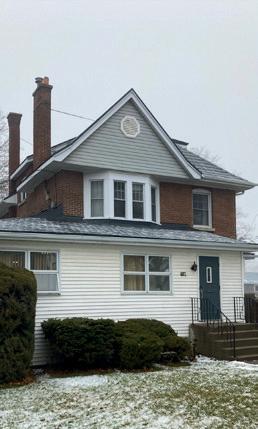

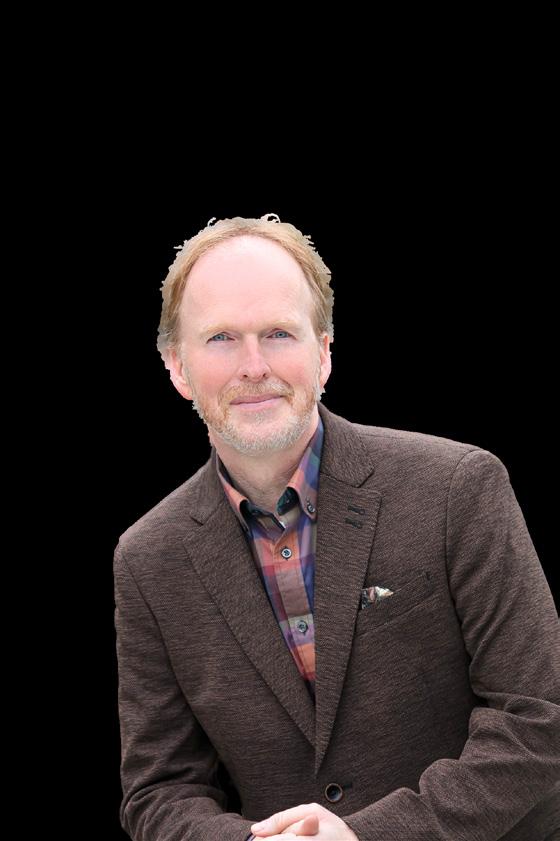
By Roderick Benns Publisher
It was a black pickup truck on Kent Street in Lindsay, with a sticker affixed to the back window that caught my attention recently. In serious, we-meanbusiness block letters, it read: I Want My Canada Back.
Now I’m not sure who took this person’s Canada. The last time I checked it was still here, notwithstanding the wishes of the authoritarian octogenarian to the south of us. (Close enough on the age.)

Nostalgia is a dangerous commodity. At its best it wears rose-coloured glasses, wallowing in wistful, feelgood memories. And at its worst, it’s a gateway drug to intolerance.
This sticker could represent many things, from bigotry, to racism, to small-mindedness. We don’t know.
But even at its most benign, it’s clear the creator of the sticker trafficked in nostalgia, as did the buyer when they slapped it on their truck.
Nostalgia is a dangerous commodity. At its best it wears rose-coloured glasses, wallowing in wistful, feel-good memories. And at its worst, it’s a gateway drug to intolerance.
Reflection is a much different enterprise we engage in, if done well. Reflection asks us to reckon with our current beliefs and consider other viewpoints. It offers the gift of growth, based not just from remembering something, but from extracting meaning from experience. When we reflect, we engage with our past in a way that allows us to mature, learning from successes and failures alike.
That’s not to say we can’t get misty eyed when The Facebook reminds us of our
child’s eighth birthday, or a loved one who is no longer with us. That’s just being human. The difference is in how long we engage with those memories vs. connecting with the here and now, in willingness to move forward.
Nostalgia can be a trap to which we succumb; reflection offers integration and a throughline between our past and our present. One is a fixed mindset, the other is a growth mindset.
When I think about this topic, you may be surprised to know that I turn to Odin. As an autodidact for all things Norse, I find the ruler of the Norse gods provides a helpful perspective.
Huginn and Muninn are Odin’s ravens, serving as his loyal messengers, helping the Allfather, as he was known, to perceive everything that unfolds. Huginn, meaning “Thought,” represents the rational side of Odin’s intelligence, always processing information and making logical connections. Muninn, meaning “Memory,” represents the ability to recall past events, learn from history, and retain wisdom that has already been acquired.
Odin’s ravens represent the perfect blend of nostalgia and reflection. In the Poetic Eddas, Odin was most concerned about the raven Memory returning to him each day, even more than Thought. I always thought this strange at first, but Norse scholars believe that Odin’s reliance on Memory is so vital that any lapse (symbolized by the bird’s absence) could impair his ability to recall previous lessons, thereby weakening his wisdom and foresight. Recalling previous lessons is critical in our own lives, too. Nostalgia reminds us of what mattered, but it’s reflection that brings clarity – ensuring our past is not merely about longing, but about actively moving forward.


Business leaders say the quality of life in our growing communities will depend on a workforce able to meet community needs
Kawartha Lakes is experiencing steady population growth in the first quarter of the 21st century, which some in the real estate sector say is fuelled by factors including families looking for more space, a slower pace of life and more opportunities to enjoy the outdoors compared to what living in the GTA offers.
But what matters, say local community leaders, is that the growth is balanced, so there are opportunities for all.
According to Statistics Canada, there were 79,247 people living in Kawartha Lakes during the 2021 census, up from 75,423 in 2016. The city is expecting the population to reach about 100,000 by 2031 and 117,000 by 2051.
These numbers represent a sharp increase from 69,179 –the number of people Statistics Canada reported living in Kawartha Lakes in 2001.
Trish Todd, a Lindsay-based real estate broker with Revel Realty, says she’s seeing an influx of families moving to Kawartha Lakes from the GTA seeking a better quality of life in a more affordable city.
This is especially true, she said, of younger families who want more living space, quieter neighbourhoods, an overall slower pace of life and, especially, access to an outdoor lifestyle – all of which Kawartha Lakes offers.
By Deron Hamel
“The big draw is the lifestyle,” Todd told the Advocate. “People love the idea of being close to lakes and nature. Whether it’s boating in the summer, snowmobiling in the winter or just relaxing with a view, there’s a huge appeal to that slower, outdoorsy pace of life.”
On weekends, if the weather is nice, Aaron Young, a local real estate agent and businessman, said he sees “droves” of people visiting Kawartha Lakes from the GTA.
Based on his conversations with visitors, Young said the laid-back lifestyle and proximity to lakes, rivers and trails are drawing them to the area – and he said he understands why.
“I’ve lived here since I was 15, and (these things) still put a smile on my face,” Young said, adding the people of Kawartha Lakes are friendly and welcoming, which supports the area’s natural beauty and lifestyle.
He underscored how important having friendly locals is to a community.
“If you’ve got all the right stuff but you don’t have the right people who love it the way we do as locals, you won’t have what I believe we have,” he said.
Of course, with more people relocating here, more employment opportunities and services will be needed.
Terry Guiel, the executive director of the Lindsay and District Chamber of Commerce, said population growth in the city will likely cause the region to experience “a balance of challenges and opportunities” for the business community.
The outcome, he added, will depend on how well the community predicts the needs of the population while also recruiting people for the workforce.
“Our businesses rely heavily on attracting and retaining quality employees, (and) the need for various levels of employees, from basic labour to highly skilled, will (require) a workforce pool to recruit from,” Guiel said, adding that he hopes newcomers to the region can help strengthen the local workforce.

Jami Joy, a sales representative with Royale Town and Country Realty in Lindsay, said she’s also noticing clients moving to Kawartha Lakes from the GTA in search of a more relaxed lifestyle and the close proximity to natural beauty. She added that Kawartha Lakes has the two-pronged benefit of having an abundance of amenities and being increasingly multicultural.
Joy highlighted Ross Memorial Hospital (RMH), the city’s many shopping options and Fleming College’s Frost Campus as being key points for home buyers looking to relocate to Kawartha Lakes.
“It’s attractive for the community aspect: (Kawartha Lakes is) smaller than the GTA, but yet has all the amenities needed,” she said.
Then there’s the cost of living.
A 2022 study conducted by Toronto-based insurance provider PolicyAdvisor reported that two municipalities within the GTA – Toronto and Mississauga – were among the five most expensive cities to live in North America.
The study’s calculations were based on monthly rent, public transport costs, a restaurant meal, a bottle of water, a cappuccino, a one-month gym membership and the price of a cinema ticket.
Kawartha Lakes is more affordable than many parts of the GTA, “especially when it comes to getting a detached home or property with land,” Todd said.
“Expanding our emergency care capacity is a key component of Ross Memorial Hospital’s plan to meet the ever-increasing service demands of our growing population,” she said.
Joy said she is seeing a mix of family types moving to Kawartha Lakes for a variety of reasons. One she said stands out is an increasing number of multi-generational moves, with parents and children combining incomes to buy homes.
“It’s ideal for downsizing for our seniors and gives young families an opportunity to be able to purchase real estate,” she said. “And raising children outside of the city is definitely a draw to the Kawarthas as well.”
Another factor Todd attributes to people wanting to relocate to Kawartha Lakes is the sense of community they get from living in a smaller city.
Whereas in a major metropolitan area like the GTA people sometimes feel anonymous, in a small city like Kawartha Lakes they feel recognized and welcomed, she said.
“A lot of people mention how welcoming the small communities feel,” Todd said. “People know your name at the coffee shop, (they) open doors and wave. Everyone is pleasant.”
As the population of a city continues to grow, infrastructure needs to keep pace with increased demands, since access to amenities, like education and health-care facilities, are important to home buyers.
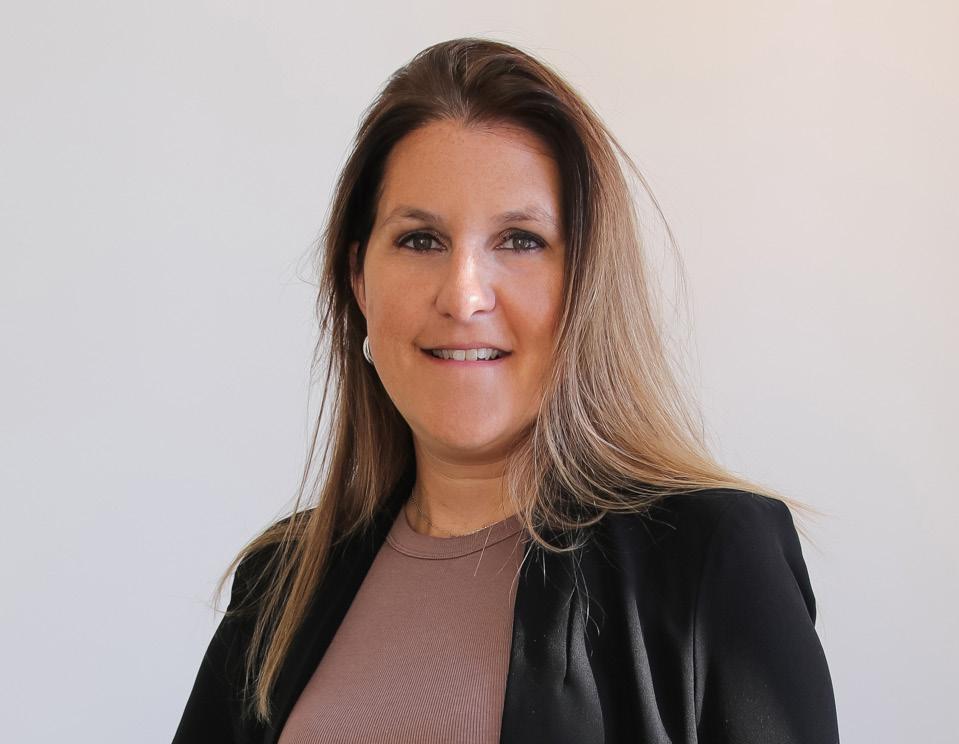
In its Long Term Accommodation Plan for 2025-29, Trillium Lakelands District School Board (TLDSB) reported that while enrolment in its schools is expected to take “a slight dip” in the short term, an increase in pupils is forecasted by the end of the decade.
TLDSB can accommodate about 5,600 elementary school students and 2,500 secondary students.
Also reflected in that official plan, TLDSB says its schools are at 73 per cent enrolment capacity with an expectation for its schools to be at capacity by the end of the decade.
Health care is a crucial area that’s seeing a proactive approach made to accommodate future needs as Kawartha Lakes’ population grows.
Joy said she is seeing a mix of family types moving to Kawartha Lakes for a variety of reasons. One she said stands out is an increasing number of multi-generational moves, with parents and children combining incomes to buy homes.
In November, the Ontario government announced it would be funding an expansion project to improve emergency healthcare services at RMH. The expansion will include a new, state-of-the-art mental health emergency services unit and a new trauma room with enhanced infection control to provide staff additional space to treat patients requiring urgent care.
RMH President and CEO Kelly Isfan said in a statement that
addressing the growing population in the region is one of the main reasons for the project.
“Expanding our emergency care capacity is a key component of Ross Memorial Hospital’s plan to meet the ever-increasing service demands of our growing population,” she said.
“With close to 35,000 patients attending our emergency department in (2023), enhanced and expanded emergency facilities will play a crucial role in meeting our community’s needs.”
Young said there are so many opportunities to bolster the local healthcare sector, supporting the growth the hospital is experiencing. Like many Canadian communities, Kawartha Lakes needs more doctors, and with that comes needed support staff, such as nurses, blood technicians and other health-care workers, he said.
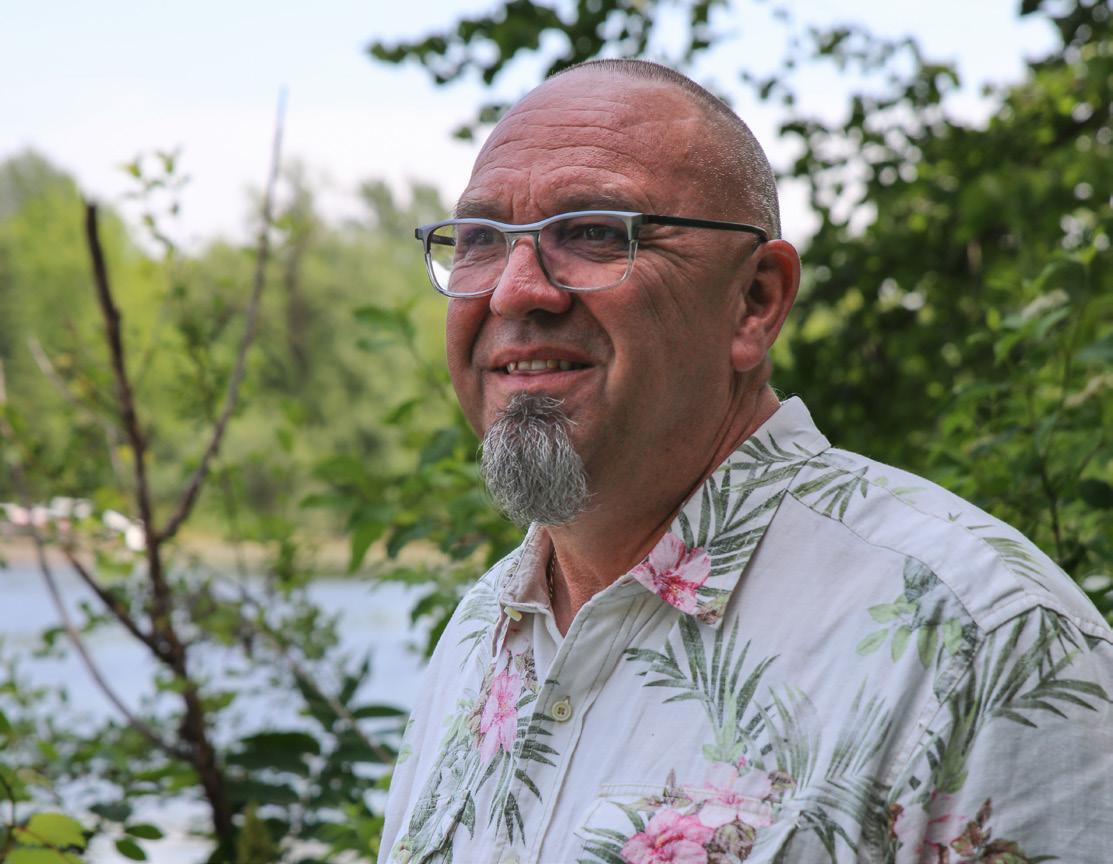
Aaron Young says more employment opportunities and services will be needed for a growing population. Photo: Sienna Frost.
“(If) the community is going to grow, we need to support that,” Young said.
In a 2023 interview with the Advocate, Ron Taylor, the city’s chief administrative officer, said Lindsay is expected to experience the most growth in Kawartha Lakes in the coming years, with areas such as Bobcaygeon, Fenelon Falls, Omemee and Woodville expected to see modest growth.
Taylor said almost 22,000 new homes are expected to be built by 2051, with more than 16,000 of them in Lindsay.
“Lindsay is where the demand for growth is occurring, and where the servicing and infrastructure and amenities like the hospital, college, shopping and transit are in place to support growth,” he said. LA


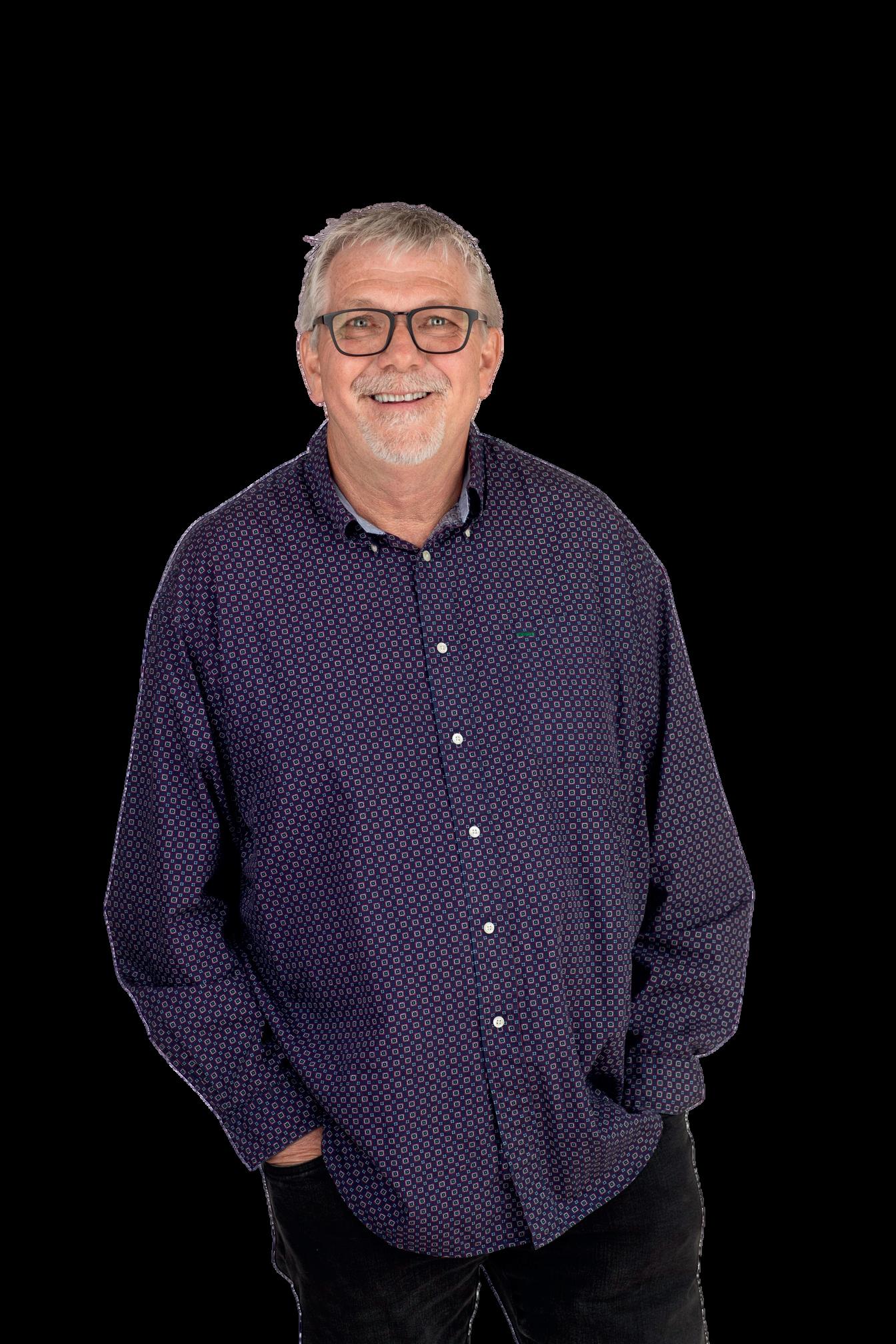

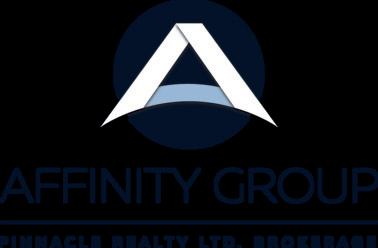


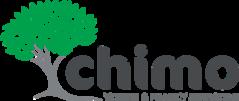
Chimo Youth & Family Services Board of Directors has an opportunity for you!
Chimo is an accredited, not-for-profit child and youth mental health agency funded by the Ministry of Health and the Ministry of Children, Community, and Social Services.
Serving on the Board is an extraordinary opportunity for an individual passionate about strengthening leadership and governance in the non-profit sector.
Chimo is currently recruiting individuals with various backgrounds, including but not limited to expertise in financial management, legal services, human resources, and community engagement.
For questions, or to request an application to become a Board member, email info@chimoyouth.ca

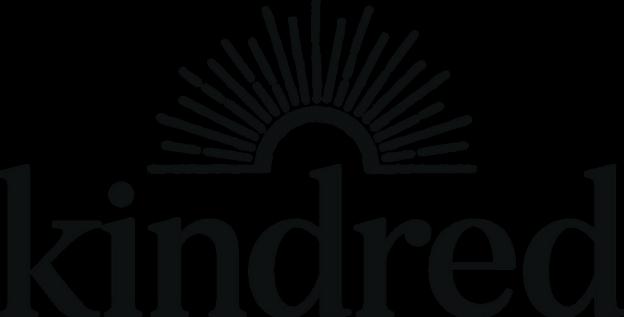










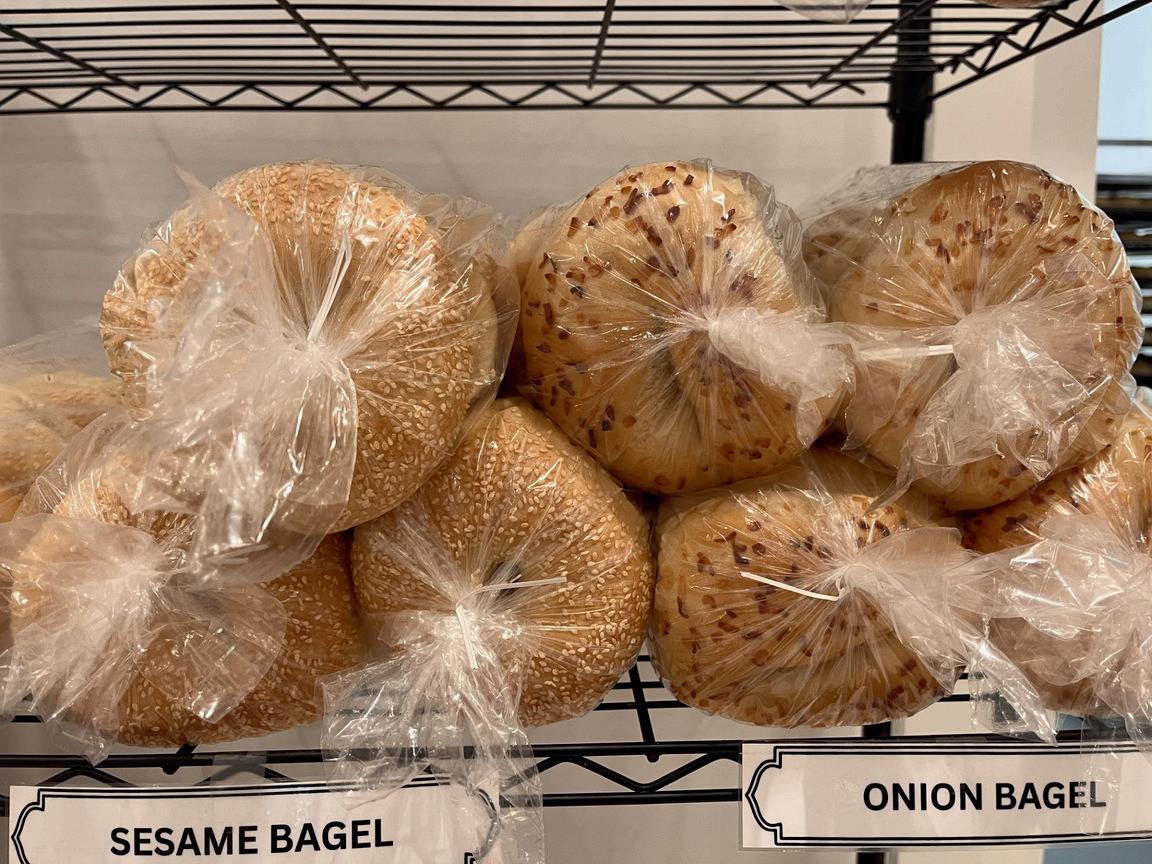

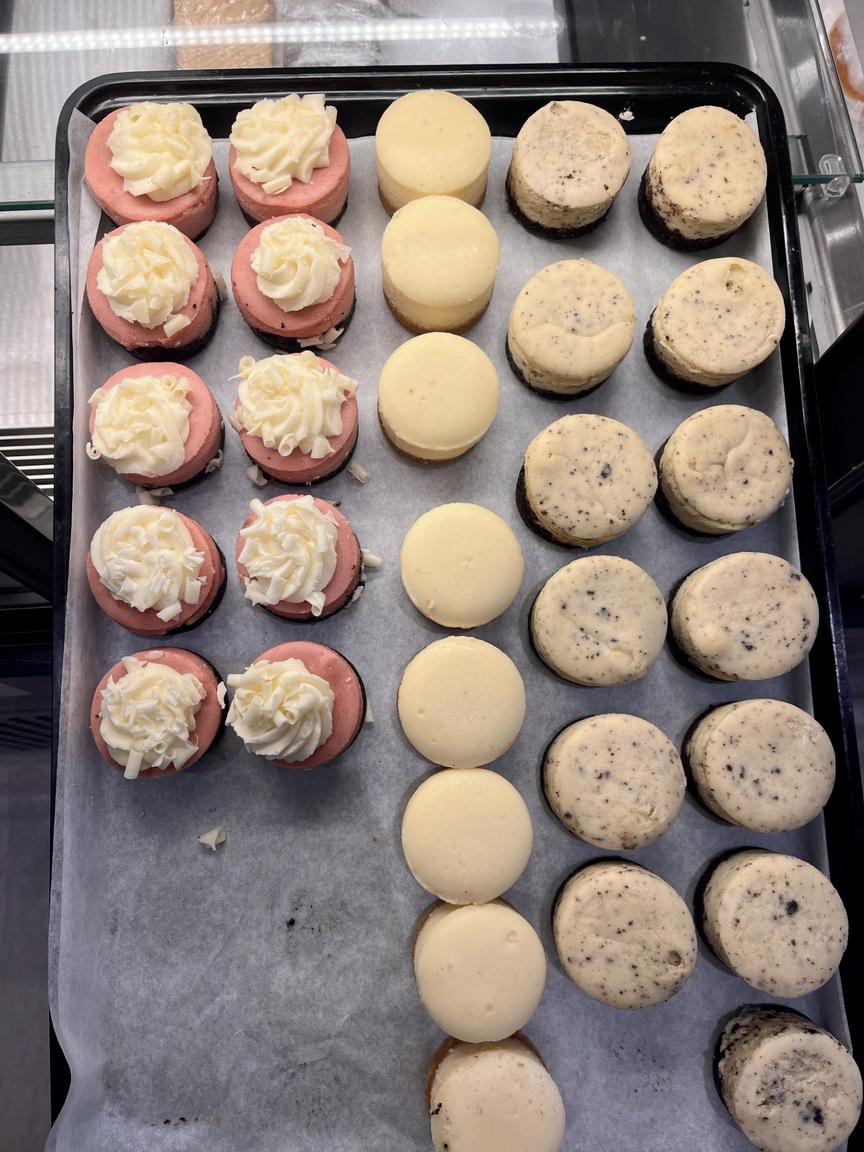





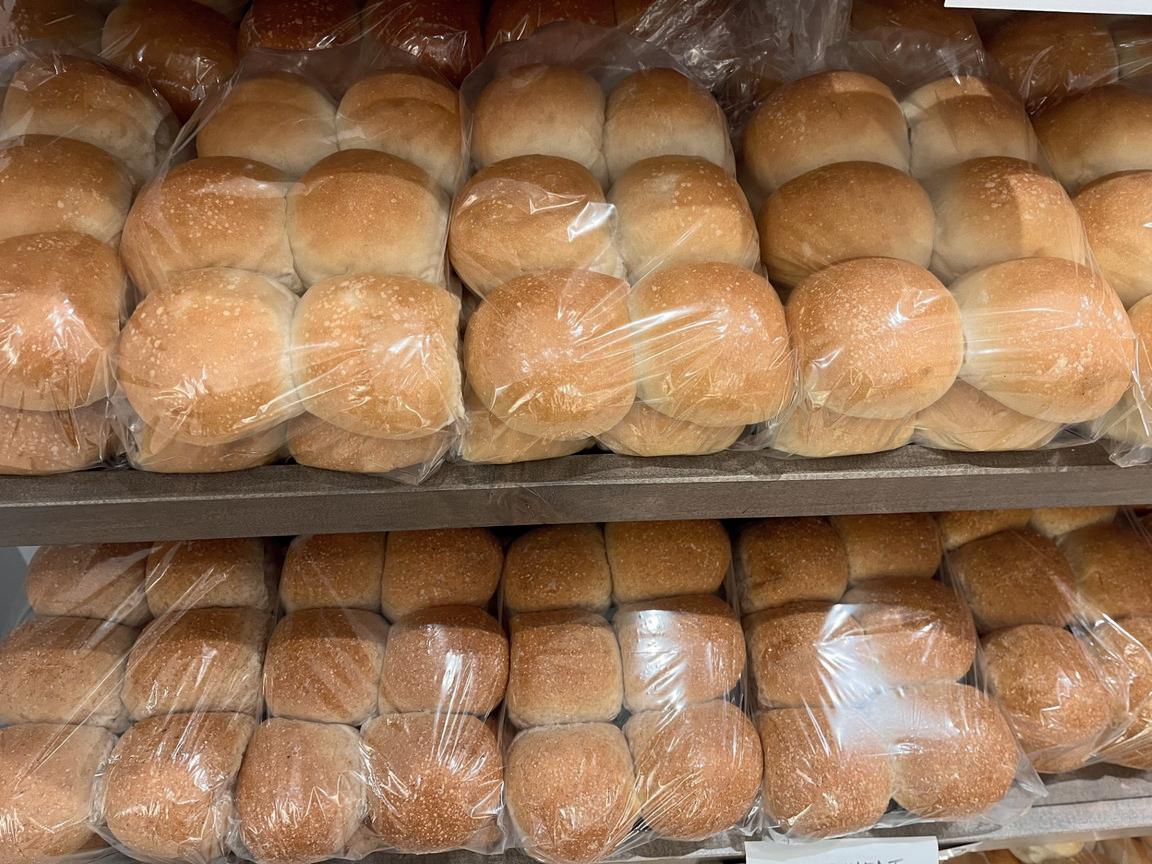

By Richard Gauder
“Beginning a conversation is an act of bravery.”
— Sakyong Mipham, The Lost Art of Good Conversation
We find ourselves living in a world where a growing number of people now use their thumbs to do a lot of the talking. Text messages and status updates zip by at lightning speed, leaving people scrolling, swiping, and liking rather than speaking, listening, and reflecting. Digital platforms reward brevity, encourage quick reactions, and often starve conversations of any depth. As a result, attention spans shrink while meaningful, face-to-face exchanges become increasingly rare.
You can see it happening all around you. People with their heads in digital devices rather than having face-to-face conversations.
(The fact that most of you are reading this feature in the print version of the Advocate is a good thing.)
Before phones and iPads, television captured our attention. We gathered around big screens instead of engaging in conversation.
The term “Crackberry” is generally believed to have emerged in the mid-2000s. And for good reason. As Canada’s BlackBerry smartphones became indispensable, especially in the corporate world, people began noticing how addictive these devices could be — so much so that users would constantly check their email and messages.
They had no idea what was coming around the bend.
Then, in 2007, the iPhone arrived. Many worried these handheld, internet-connected devices would harm society. They blamed technology — but technology doesn’t feel or care. It just is, quietly creeping into our lives. Ironically, many of those same skeptics now carry smartphones themselves. As the Borg said in Star Trek: The Next Generation, “Resistance is futile.”
Only one in five Canadians talk to strangers. They are three times happier than those who don’t, according to researchers at Simon Fraser University.
People have conversations for all sorts of reasons — to connect, share ideas, express emotions, entertain, persuade, learn, or build and maintain relationships. We also have conversations internally with ourselves, shaping how we communicate with others.
In my world, there’s something I call “the conductor”— others might call it the “I.” It’s that internal, reflective self, your consciousness. It’s the observer within, home to your intuition and self-awareness — the quiet voice watching, thinking, and feeling inside.
Then there’s the “me”— your external self, the part that interacts with the world and other people. It’s the personality you project outwardly, the version of you that your “I” observes.

This internal dialogue shapes how you communicate, react, and connect. When the “I” and “me” align, people seem more genuine, authentic — their eyes brighten, and they feel truly alive.
We also create extensions of ourselves — computers for brains, tools for hands, vehicles for legs. Soon enough, entire industries spring up around them. Companies hire marketers to convince us we absolutely need the newest, shiniest thing, giving these products near-magical powers. For some these external possessions become a big part of who people are. Some even judge others by the external things they own, creating separation.
We haven’t had cable TV for more than 25 years, but during COVID, we started watching shows — with commercials. That’s when it hit me: everything is a story. What our parents taught us, what schools taught us, what media bombards us with — all stories. But are these stories true or even healthy? Who says “keeping up with the Joneses” is
Adults joined the tech-savvy youth, spending three years glued to screens. Our online experiences became hyperpersonalized, making it harder to see our common ground.
a life worth chasing? What if the Joneses aren’t great role models?
And what if the stories fed to us in a consumer-driven, capitalist system don’t make us happier? Maybe the Dalai Lama has a point when he says materialistic Western cultures simply aren’t as fulfilled as those less focused on possessions.
Social media accelerated the erosion of politeness and

civility when platforms discovered anger and outrage drive engagement. More engagement meant more targeted ads. Who needs TV or newspapers showing war and crime to keep viewers glued, when you can tweak algorithms and get users arguing online?
Then, as if things weren’t already complicated enough, along came a pandemic. Adults joined the tech-savvy youth, spending three years glued to screens. Our online experiences became hyper-personalized, making it harder to see our common ground. Suddenly, we became our own authorities. The internet’s promise of empowering individuals was fulfilled. YouTube “influencers” became the new rock stars.
The very idea of civil discourse took a beating. Even politicians and their strategists started using anger. The intensity with which people with different viewpoints have wanted their voices to be heard grew, excluding the viewpoints of others.
When people emerged from the pandemic, they weren’t used to dealing with spitting-mad human beings in the flesh.
Some people loved working from home so much they stuck with it, further reducing face-to-face interactions. Pulling back from in-person connections started to feel normal.
Then there’s the disappearing and all-important “third place” — spots that aren’t home or work, where people of diverse backgrounds and interests come together. Think Cheers, the neighbourhood bar from TV. Community groups like Rotary, Kinsmen, and Lions clubs are seeing memberships dwindle. Church attendance is dropping too. So, where can we practice conversations beyond our immediate circles or tribes? The loss of these third places is becoming a real concern.
We live in extraordinary times. Never before have we had access to so much information, so many voices, and countless platforms for self-expression. Technology connects us
across continents, lets us instantly share moments with loved ones, and collaborate from anywhere. Digital communication has enriched our lives. It’s fast, convenient, and incredibly efficient.
Yet paradoxically, research shows that loneliness has been on the rise in Canada over the past decade.
• Studies show roughly half of Canadians experience loneliness at least sometimes.
• Half of all seniors and 75 per cent of people with mental-health issues claim to suffer from crippling solitude.
• More than 100 studies have established that loneliness can shorten a human lifespan.
Wherever there’s a void, humans naturally find solutions. Artificial Intelligence and large language models have evolved rapidly. Now AI platforms like ChatGPT offer real voice conversations. Imagine chatting in-depth about any topic with the smartest person (okay, computer) in the world. It’s quite the experience.
This is not to say that digital communication is inherently bad. It’s a tool, and like all tools, it’s about how we use them. The problem arises when we forget that there’s another dimension to human connection that can’t be captured through screens.
But there’s another side to this digital revolution we shouldn’t ignore – how it’s subtly changing our habits, and the quality of our conversations. We’re losing some of the richness and nuance of real human expression. When we text or tweet, we compress thoughts into tiny fragments, relying on emojis, abbreviations, and memes to convey emotions. Sure, they’re creative, but they’re no substitute for vocal inflection, facial expressions, or the warmth of someone’s presence.
Moreover, our attention spans are being impacted. In the digital realm, information comes at us quickly and in small bursts. Conversations, on the other hand, require patience and focus. They unfold over time, allowing space for thought, reflection, and a give-and-take that can’t be replicated by rapid-fire interactions online. As we become accustomed to shorter and more fragmented forms of communication, we find it harder to sit down and truly engage with someone in a conversation that requires more than a few seconds of attention.
There’s also the gradual erosion of empathy. Online, we see

only words on a screen, not the faces, voices, and gestures of real people. It’s easier to misunderstand or dismiss someone when they’re reduced to text. In face-to-face conversations, subtle cues like tone, pauses, and body language help us connect and empathize. Without these cues, we risk becoming isolated, rigid in our perspectives, and less able to truly understand each other.
This is not to say that digital communication is inherently bad. It’s a tool, and like all tools, it’s about how we use them. The problem arises when we forget that there’s another dimension to human connection that can’t be captured through screens.
If we accept that our in-person conversations have declined

in quality and frequency, our next step is clear: we need to actively seek out others to have face-to-face conversations with. By practicing listening, asking open-ended questions, showing empathy, and tuning into non-verbal cues, we rebuild the foundations of genuine dialogue.
And remember storytelling. It’s one of humanity’s oldest and most powerful conversational tools. Long before we had the internet or even the written word, we gathered around fires and
told stories. Stories help us share experiences, values, and lessons learned. They provide context and colour, making abstract ideas more relatable and memorable.
When you share a personal story, perhaps about a challenging time in your life, a funny misunderstanding, or a meaningful turning point, you invite others to see the world through your eyes. In return, when someone tells you their story, you learn more about who they are, what matters to
them, and how they’ve come to hold their beliefs. Stories humanize us and make it easier to appreciate one another’s uniqueness.
In the digital age, the art of conversation seems to be fading. But it doesn’t need to be this way.
We should develop more ‘third’ places and opportunities for our community members to engage outside of homes, workplaces, and digital environments. This includes more cafés, bars, and regular events. Municipalities can contribute significantly by creating shared civic spaces such as parks and community centres, ensuring they are welcoming, well-designed, and properly maintained. These spaces encourage natural conversations between friends and strangers. Without these neutral environments, in-person interactions may decrease, leading to increased reliance on digital communication.
When we have deep conversations, we’re not just exchanging information; we’re sharing parts of ourselves. Approaching a conversation with curiosity and kindness allows you to put yourself in another person’s shoes. Because the ultimate goal of conversation isn’t just to exchange information — it’s to connect more deeply, to foster understanding, and to create a richer sense of community with the people around us.
I don’t think we’ve lost the art of conversation. But if we’re not careful, the conversations we will increasingly prefer may not be with other human beings, they’ll be with computers. And then we’ll all be lost. LA
—Richard is the co-founder of CMS Web Solutions, a Canadian web development, hosting and education company, specializing in digital accessibility. He is a business and community entrepreneur having co-founded five 100 Men groups including 100 Men Kawartha Lakes. In May 2019, he and his wife started planting trees and accidentally started another organization, now called Plant Kawartha. He resides in Lindsay.
I started The Lindsay Advocate in 2017 to make a positive difference in my hometown Then last summer, our small, independent team revived an all-local, traditional weekly newspaper Kawartha Lakes Weekly.
Local journalism matters more than ever now. Won’t you help us protect it?
Visit our website and choose Support Us or contact 705-341-1496 or roderick@ lindsayadvocate.ca.
Thank you to everyone who has chosen to support local journalism.
–
Roderick Benns, Publisher



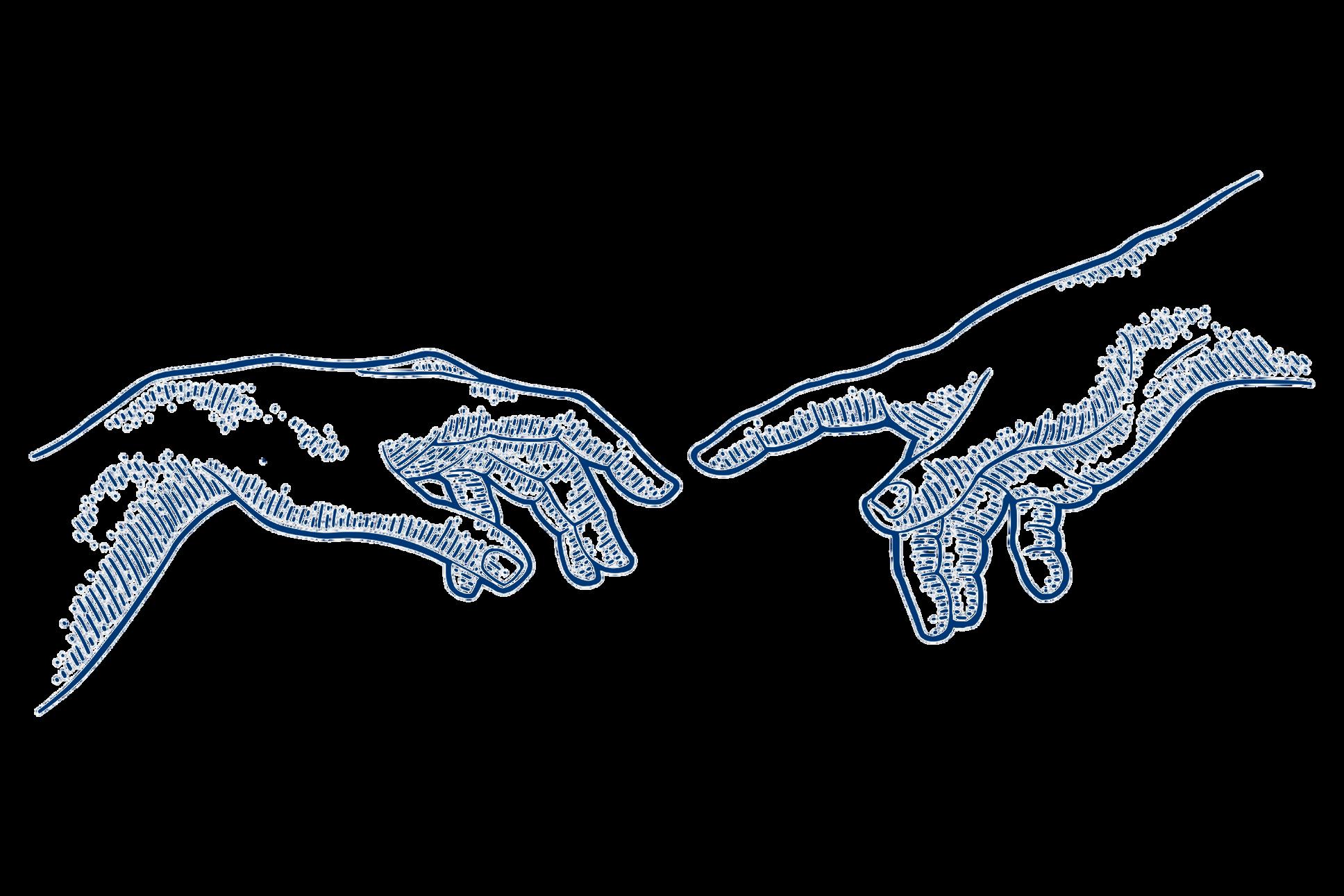
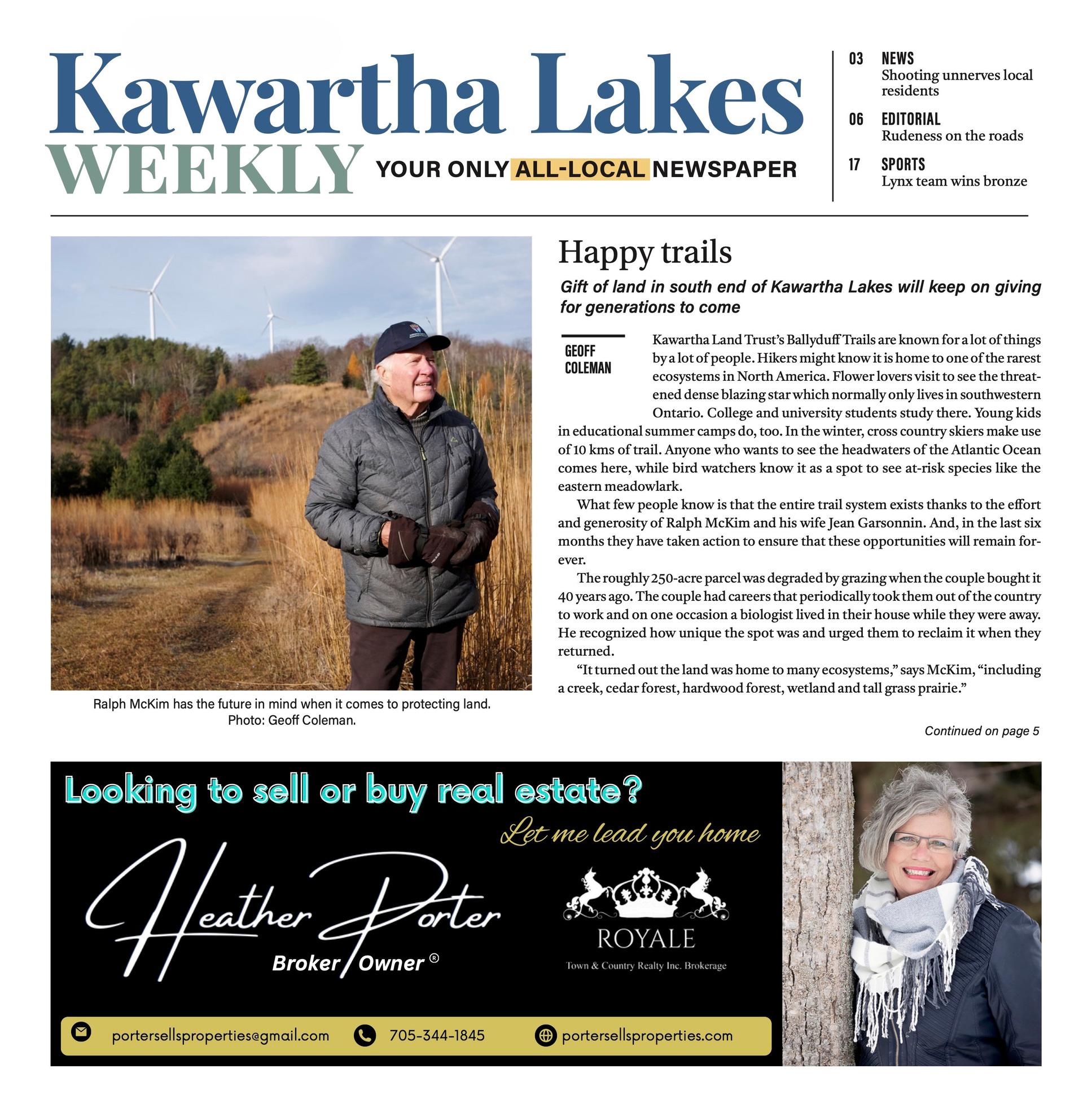

At WARDS LAWYERSPC, we recognize the emotional and mental toll that legal challenges can bring. That’s why we are committed to delivering tailored legal solutions, helping our clients navigate difficult times with confidence and clarity.

In the immortal words of Elsa, ‘let it go’
By Aliyah Mansur Contributor










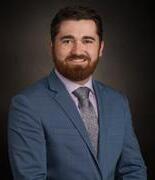

As a collector of clothing, I partake in the annual ritual of spring cleaning each year. Pulling out each item, reflecting on whether it represents a version of me that is now in the past – a me I’d prefer to move on from. The whole process has me practicing that mystical art of letting go and got me wondering, should I apply this thinking to more than just stuff? Perhaps relationships should be re-examined with more frequency. Why blindly carry forward anything, or anyone, that could be holding us back?
I’ve let go of my fair share of people over the course of my life, partially because I’m a bit hotheaded, disagreeable, and abrasive, so if we’re going to be friends you likely need a tougher skin.
Easier said than done. People, and relationships in particular, present layers of challenges when trying to let them go. Other people generally add levels of complication and messiness to life that can be difficult to un-entwine. But the company we keep impacts us, no matter how independent and sure of ourselves we may be. If the people around you are constantly complaining, criticizing, or cutting down your ideas, hopes, and dreams, then you’re likely going to feel drained by it at best and give up said dreams at worst. I’ve let go of my fair share of people over the course of my life, partially because I’m a bit hot-headed, disagreeable, and abrasive, so if we’re going to be friends you likely need a tougher skin.
But mostly because I’ve found that holding on to those relationships I’ve outgrown or simply grown away from, is worse for both me and the other person. It leads to more fighting and less rejoicing. More disappointment, guilt, and anxiety, and less connection, trust, and love. And of course, relationships of all kinds come with challenges, presenting you with a choice, to either fight for it and work things through or… let it go. But communication isn’t always fruitful, or a solution. Sometimes an impasse is just that – impassable. Now, you might be wondering why I’m talking about letting people go and trimming the relationships in our lives at a time when loneliness is our latest epidemic. And it’s exactly for that reason – the idea that human connection is scarce these days – that I’d like to affirm that not all relationships are made equally, not all connections are good for us. Because trying to develop relationships with others with a scarcity mindset usually results in accepting less than we deserve. And we all deserve to have authentic connections and meaningful relationships. Even if that means having fewer great friends that will ultimately have a better impact on our lives, rather than dozens of acquaintances we can’t call when life gets inevitably tough.
Of course, like with all things, balance is key. I wouldn’t want everyone to go ending their relationships left and right with no discernment. But as we grow and evolve, like our style does over the decades, there are benefits to letting go of both the clothes and people in our lives that don’t make us feel how they used to.




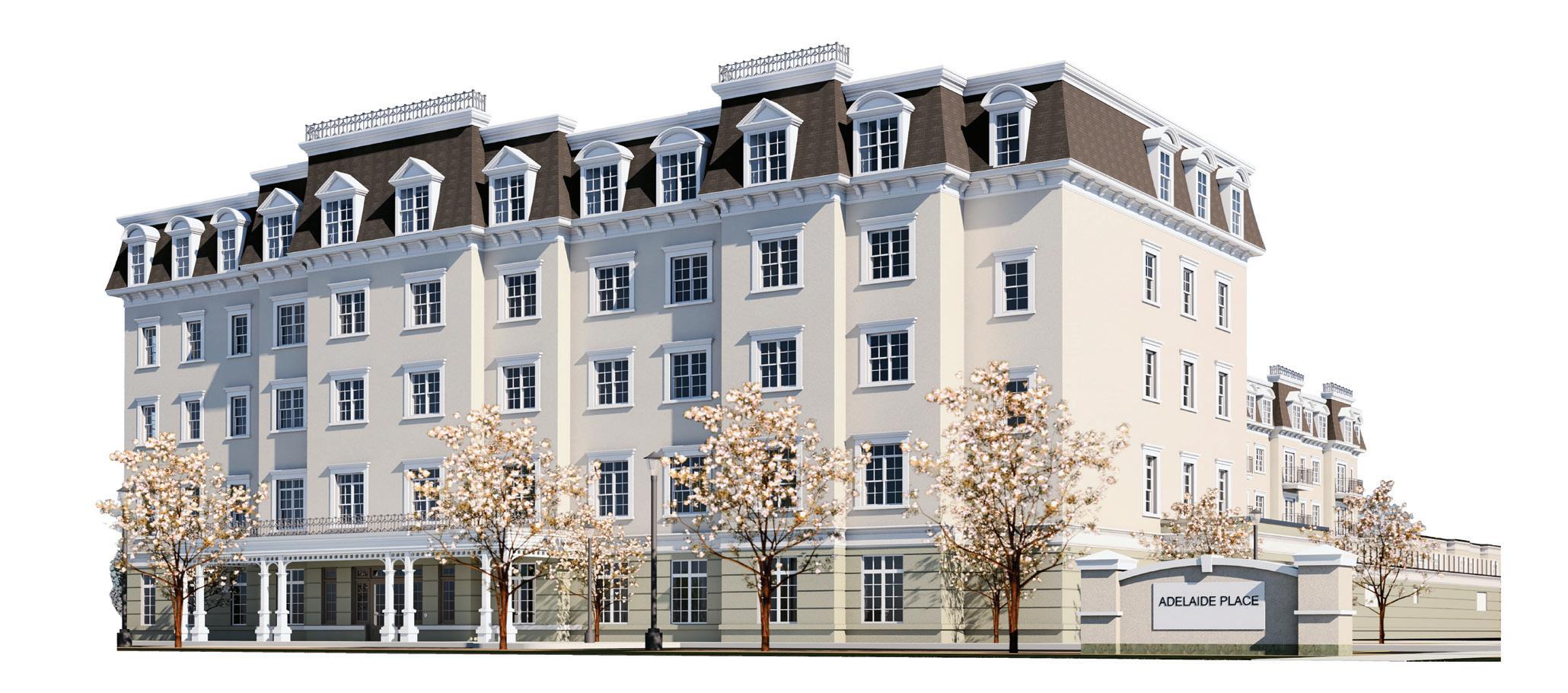













By Roderick Benns
Mayor Doug Elmslie called it a “red letter day” for the community as Flato Developments Inc. hosted the official groundbreaking ceremony for its Lindsay Grace & Grand community.
The development has already seen strong interest, with 113 townhomes sold out in its first phase, underscoring the urgent demand for new housing in the region.
Elmslie says the town is “finally starting to see the building on the east side of Lindsay that we’ve seen on the west side.”
“And it fits in with our plans for development and the number of units that have been promised for some time,” the mayor added.
The Grace & Grand community will offer a mix of thoughtfully designed homes that support both growing families and individuals looking to settle in the vibrant, evolving city, according to a media release.
“This is more than just a groundbreaking — it’s the beginning of a new chapter for Lindsay and the broader Kawartha Lakes region,” says Shakir Rehmatullah, president of Flato.
“We are committed to building complete communities, and Lindsay Grace & Grand reflects our vision of blending quality homes with long-term community value,” he added.
All of this is happening against the backdrop of incredible growth for Kawartha Lakes, and especially Lindsay.
Elmslie said all the development that is going to take place, including the upgrades to the town’s infrastructure and roads system, “is all going to start happening, out to the year 2031, where we can expect that the town of Lindsay itself will probably double in size.”
Rehmatullah added that the process has already started, gesturing to the fields behind him with large equipment standing by. “We are excited to start home building.”
“Our goal is to have the homes completed by sometime next summer,” the Flato president adds.
The development aligns with Kawartha Lakes vision for sustainable growth and supports broader regional goals of increasing housing supply while enhancing livability and economic opportunity, adds the release.
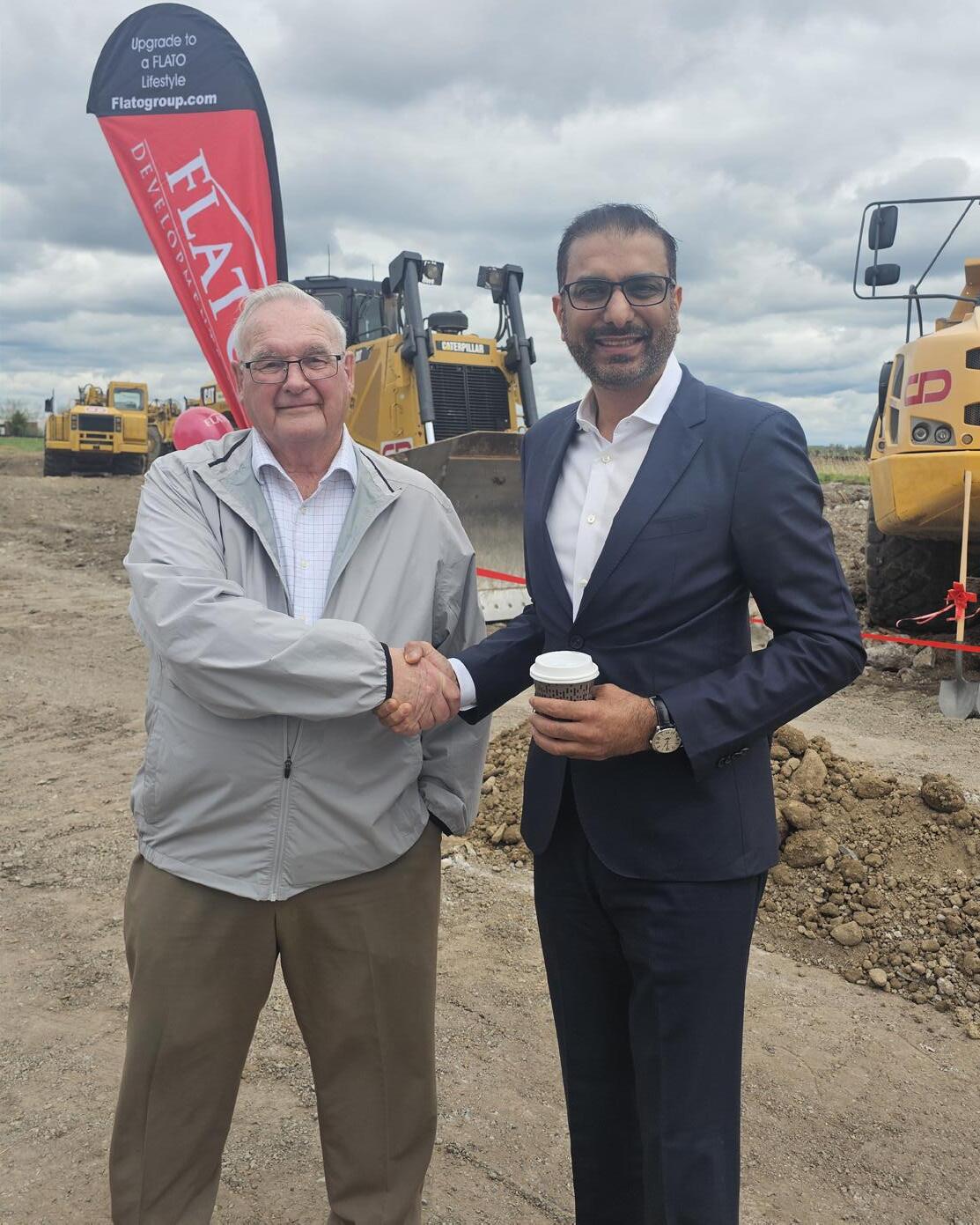
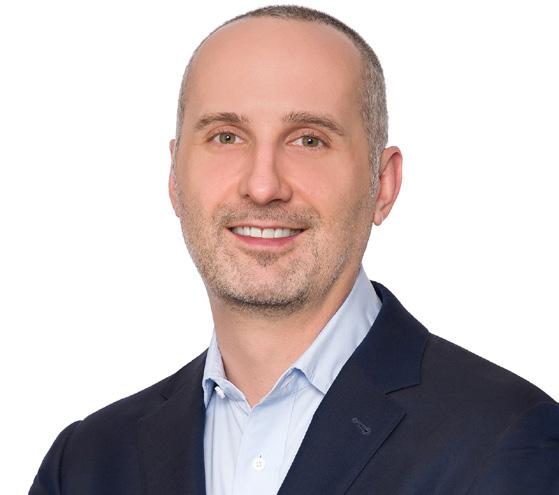
Corey Norman has been appointed as the new CEO of Launch Kawartha. Norman is a seasoned leader with more than a decade of experience guiding entrepreneurs and organizations through purposeful growth and innovation. His background includes consulting for Deloitte’s Human Capital division and advising high growth companies like Viva Naturals and FundThrough. Norman brings deep expertise in strategic management, organizational development, and team leadership. He is dedicated to supporting local businesses community growth.
By Deron Hamel

Business leaders in Kawartha Lakes say opportunities are emerging for entrepreneurs to fill market gaps as the city grows, and they’re optimistic about recent trends that suggest things are moving in the right direction.
More people are moving to the city every year, and many of these individuals and families are new Canadians representing diverse cultural backgrounds – and that means more businesses and services are needed to serve them, said Terry Guiel, executive director of the Lindsay and District Chamber of Commerce.
This creates opportunities for entrepreneurs to start businesses, such as restaurants and stores, that cater to an increasingly multicultural community, he added.
“We will see a large influx of people from the GTA who will require products, services, entertainment and food choices that align with their cultures,” Guiel told the Advocate.
“Our area has also been a bit under-serviced in restaurant choices beyond the franchise model, and we are in need of a larger facility for larger events that exceed 300 people.”
Kawartha Lakes is also a favoured region for people from the
GTA to settle in their retirement, Guiel said, adding there are opportunities to create businesses – particularly in the arts – to meet the needs of a growing senior population.
“A vibrant art, theatre and cultural experience will be highly sought after by this demographic,” he said.
Guiel added local entrepreneurs can play a crucial role by providing needed businesses and services that meet the needs of a growing population with changing demographics.
“If you don’t provide the experiences and expectations people are escaping the GTA for in your community, then the growth and success of that integration will be weakened,” he said. “We need to be welcoming, creative and bold in order to achieve these strategies, in order to maintain and grow vibrancy within the business community.”
Kawartha Lakes real estate agent and businessman Aaron Young also said more restaurants reflecting the city’s growing diversity would be a bonus.
Young said that for a long time, people looking for a diverse selection of restaurants would go to Peterborough. But
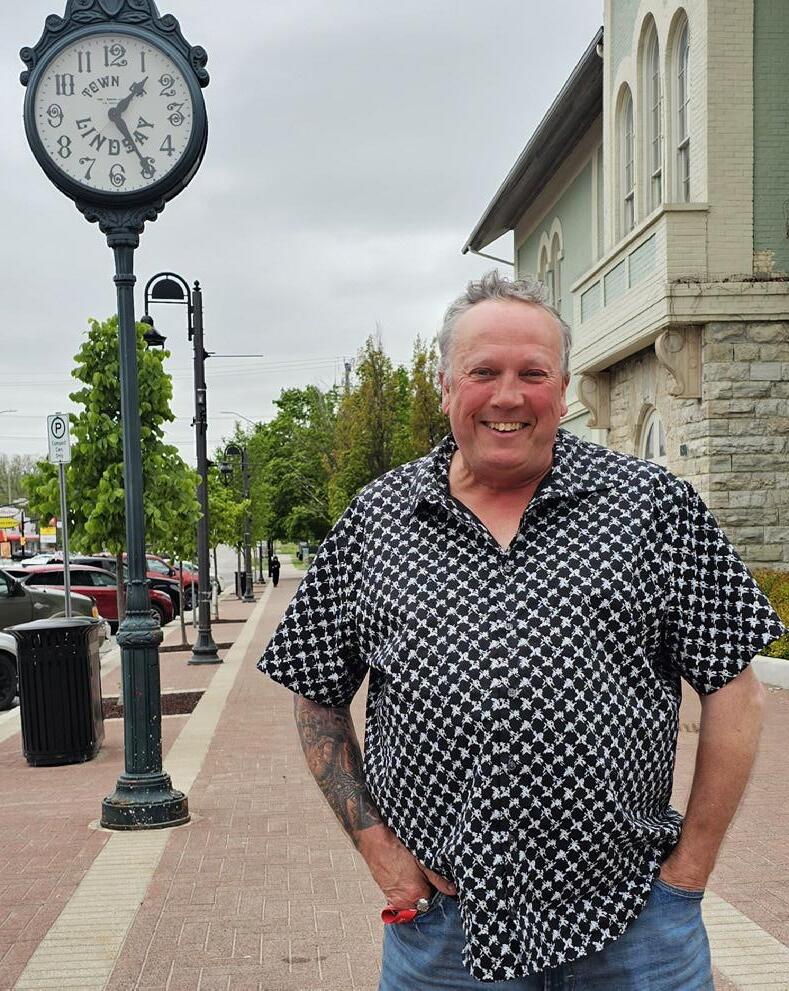
that’s starting to change, as Kawartha Lakes is becoming more multicultural, and a broader range of restaurant options are appearing, he added.
This not only serves the needs of locals, but also attracts visitors from surrounding areas, he said.
“What people don’t necessarily recognize is that the more restaurants you open in a community, the more people will come to that community,” Young said.
There’s also proactive work underway to identify and meet market needs as Kawartha Lakes grows.
Like many other areas of the city, Fenelon Falls has experienced a population increase in recent years. In response, the community has launched its second downtown revitalization project to strengthen the local economy, engage community leaders and enhance residents’ quality of life.
The initiative – called Discover Downtown Fenelon Falls –builds on the success of a previous five-year program completed in 2022, according to the Fenelon Falls and District Chamber of Commerce, which, along with the City of Kawartha Lakes and local volunteers, supports the initiative.
Project leaders conducted surveys with downtown businesses and residents to identify areas to strengthen in Fenelon Falls’ town centre. This included identifying high-potential business opportunities. At a March 26 public meeting, the project announced five opportunities identified:
• Transportation services
• Grocery stores
• Fitness and recreation centres/programming
• Full-service restaurants
• Hotels and accommodation
More than 350 residents participated in the survey, a number that demonstrates strong commitment to the town, said Shelby Richardson, who headed the study for the Fenelon Falls and District Chamber of Commerce.
“People are invested in the town’s future and want to be a part of it,” Richardson said. Young said he’s already seeing hints that the business community will meet the needs that come with growth. He cites the arrival of restaurants, such as Osmow’s Shawarma and Chuck’s Roadhouse, as positive signs that entrepreneurs are helping move things in the right direction.
“People are looking here because it’s less expensive to live and operate here, and also ... (Kawartha Lakes is) slated to be one of the fastest growing communities in Canada,” he said. “The number of new Canadians who are calling me on a weekly basis, telling me they want to open a business up here, (is also encouraging).”
Guiel said he’s also optimistic. He said Lindsay and the surrounding areas are safe, clean and do not have many of the socioeconomic issues other cities are facing. He added Kawartha Lakes “does an incredible job” maintaining the community and planning for its growth.
“Future parking needs studies, increasing the planning department staff and looking at new venues that will be used by the community for sports, entertainment and cultural enrichment are all positive signs of a community (that is) ready,” he said.
By Clinton Edwards, senior designer at Hom Drafting and Design Inc.
In real estate, it’s about “location, location, location.” In architectural design, it’s all about “planning, planning, planning.”
Planning begins before the first sketch is drawn or the first stake hits the ground. A crucial and overlooked step is understanding the zoning regulations that govern your property. Zoning bylaws dictate what can be built, how large, how tall, and how close to the property line. Jumping into architectural design without reviewing the regulations is a costly mistake that can derail a project from its onset.
Knowing your property’s zoning designation is the foundation of a successful build and key when purchasing an existing home. It determines permitted uses and restrictions for any residential and commercial activity. If your vision does not align with current bylaws, or what exists does not conform to what is allowed, you may need a minor variance or zoning amendment—a process that may involve public consultation and municipal approval.
Understanding these limitations early in the buying and developing process empowers you to design within the rules or prepare a strong case for your proposal. Skipping this risks wasted time, expensive redesigns, or denial of your permit. Informed planning respects the legal framework and the surrounding community. Always start with “What is my zoning?” Only then can the creative and practical work of building begin.

By Robyn Best
JA Northern and Eastern Ontario (JA-NEO) recently inducted five local businesses into their Business Hall of Fame.
This year’s inductees are Gordon A. Ferguson of Northern Casket, the Poole Family from Buckeye Marine, Sherry Peel from Bigley Shoes and Clothing, Tim Wisener from The Grove Theatre and the Torrey Family from Torrey-Dale Farms.
The event has taken place for the last three years, with more than 15 businesses and their leaders bring inducted.
“The Business Hall of Fame and induction ceremony will recognize the City of Kawartha Lakes exceptional business leaders who have strengthened the local economy and their community through their extraordinary accomplishments,” John McNutt, JA-NEO president and CEO said in a press release.
Mark Torrey, of Torrey-Dale Farms, told the Advocate it has been a joy having the business transfer from generation to generation. “In our case not just from our parents, but our extended family as well,” he said, “the family homestead will continue on for another generation, hopefully more.”
Torrey said he is very proud of the work the business has done over the years, “I feel especially humbled farming the very same ‘piece of dirt’ that my family has been caretaking for over 160 years.”
Tim Wisener from The Grove Theatre said, “it was a great honour to be recognized, especially given the other inductee’s pedigree and generations of business and service to the community.”
“I am very excited for what the efforts of volunteers can do for the growth of, and improvements to, the quality of life in our communities. As a volunteer you don’t dream of such recognition, but it is gratefully received,” he said.
McNutt says the event not only celebrates the work of local businesses but also “plays an essential role in helping to prepare and inspire the next generation.” Proceeds from the event support educational programs focused on financial literacy, work readiness and entrepreneurship for students.
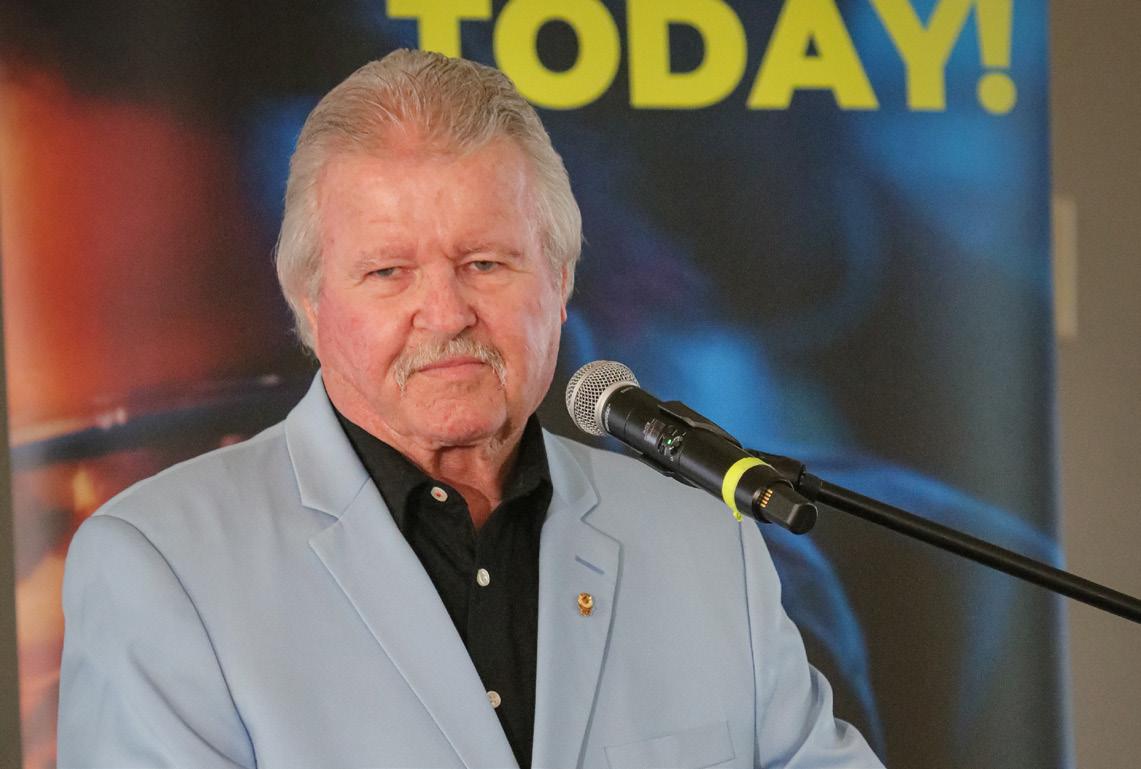
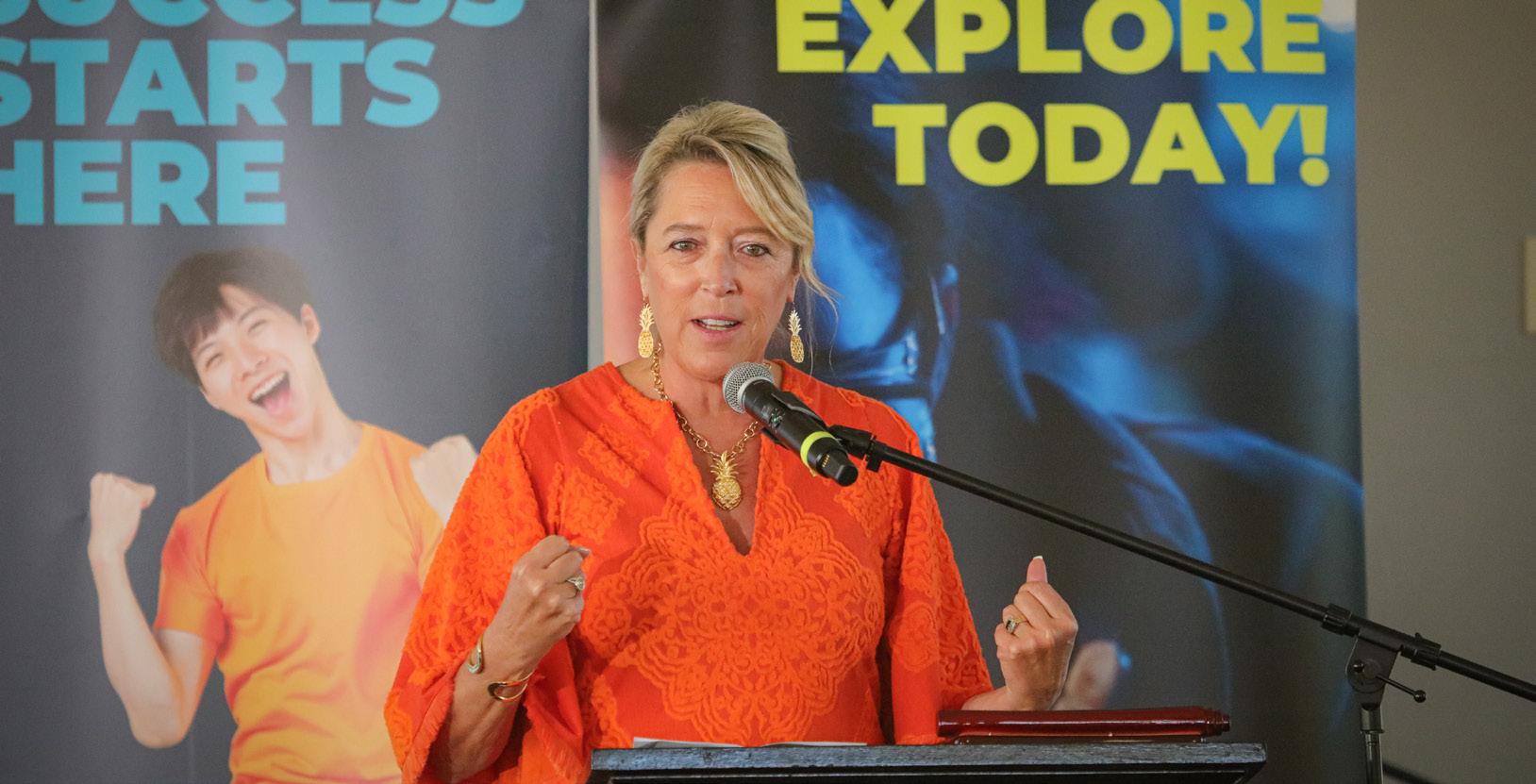
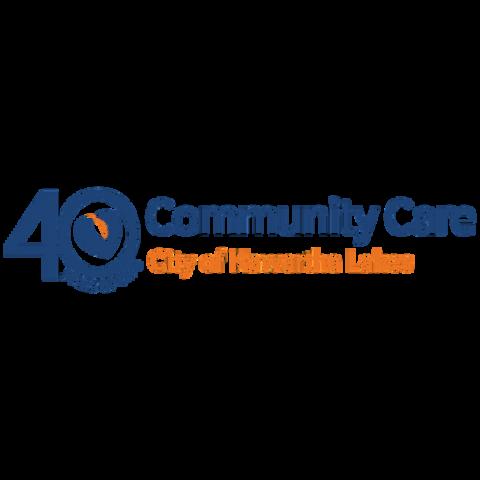










Fireside Publishing House – the all-local media team that brings you The Lindsay Advocate and Kawartha Lakes Weekly, among other publications – has won the Media Excellence Award.
Now a three-time winner of the annual award, the celebration of all things business is put on by the Lindsay + District Chamber of Commerce, culminating in a gala event. This year the event was held at Globus Theatre in Bobcaygeon.

Fireside also publishes a premium lifestyle magazine twice a year called Kawartha Social, and an annual visitors and newcomers’ guide called Play Stay Live: The Insider’s Guide to Loving Life in Kawartha Lakes.
Other winners included: Arts & Culture Excellence - Pie Eyed Monk; Board Member of the Year - Paul Murphy; Business Leader of the Year - Paul Riley, The Riley Firm; Citizen of the Year- Wanda Percival; Customer Service ExcellenceWeed Man Kawartha Lakes; Diversity & Inclusion - T.H.R.I.L; Design Excellence - Home by Tim + Chris; Employee of the Year - MaryBeth Buckley, Pie Eyed Monk; Employer of the Year - McDonald’s Lindsay; Give Back Award - 100 Men Who Care; Health and Wellness Excellence - Dr. Jacquelyn Nicholls, Adelaide Clinic; Innovation Award - Nicole Barker - At The Core Home Health Inc.; Legacy Leader- Margaret Davies, Dreamball; Marketing Excellence - Lindsay Downtown BIA; New Business of the Year - Board & Nibble Catering Co.; NotFor-Profit Excellence - BGC Kawarthas; Rising Star Award - Ainsley Herlihey, Income Tax Plus; Skilled Trades Award - KEI-Lin Roofing Inc.; Social Butterfly Award - Samantha Burke, RBC; Tourism Excellence - The Grove Theatre; Youth Mentorship Excellence - Big Brothers Big Sisters of Kawartha Lakes-Haliburton; Volunteer of the Year - Terry Foster.
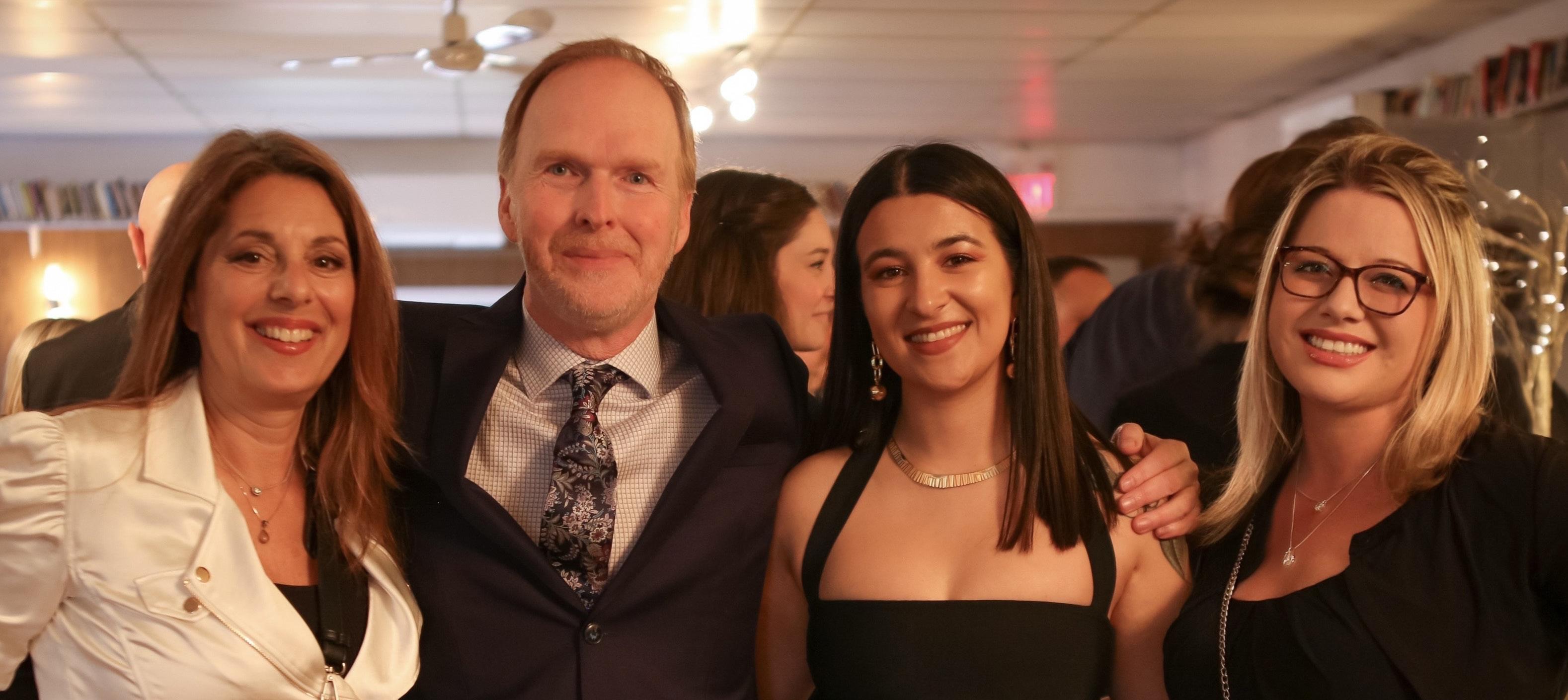


Looking for a new life with new opportunities, the Sullivans boarded the ship Regulus from Cork harbour in Ireland and set sail for Canada in the spring of 1825. John, Margaret, and their son Timothy, then journeyed by wagon to establish their new home in Emily Township, now near Downeyville.
By Laura Love
Between 1823 and 1825, Peter Robinson, a member of Upper Canada’s executive council, orchestrated two significant immigration schemes to populate the rugged lands of Ontario. The first was in 1823 and the second in 1825. The 1825 initiative brought just over 2,000 Irish immigrants from counties Kerry, Cork, Tipperary, and Limerick to Kawartha Lakes and Peterborough County. The settlers, fleeing poverty, hardship and religious persecution, were offered free passage, 70 to 100 acres of land, provisions and farm equipment. Over 50,000 applied, and 417 families were selected to immigrate. The majority of these families settled in Emily Township. They established communities such as Downeyville, transforming forested landscapes into thriving villages centred on their faith and shared heritage. Some descendants are fortunate enough to continue to live on the original land grants. One such family is the Sullivans, whose farm turns 200 this year.
I spoke with Ronald Sullivan and his daughter Sarah and saw the Sullivan farm firsthand. Ron is the great, great grandson of John Sullivan, and Sarah still lives on the original Sullivan homestead granted in 1825. We sat in the kitchen of the old farmhouse (stagecoach), and Ron drew my attention to a big blue-green binder on the table. It was full of papers and photos carefully tucked in plastic pockets, the
origins and generations of the Sullivan family carefully documented.
The Sullivans were passengers on the ship Regulus, which set sail from Cork harbour on May 17, 1825. It carried 157 passengers, arriving in Quebec on June 19, 1825. The Sullivan family, comprised of John, Margaret, and their son Timothy, journeyed by wagon to establish their new home on Concession 12, Lot 21, Emily Township, now near Downeyville, Kawartha Lakes.
Ron tells how his family received flour, an axe and an ox to go along with the family’s 100 acres of uncleared land. Along with those items, settlers were also given 18 months of naval food rations to assist with the move – think salt pork, oatmeal and ship biscuits, also known as hard-tack.
According to the family history binder, by the winter of 1825 John and Margaret were living in a modest log house, “located about 800 feet of where we are today,” Ron said, pointing west of the comfortable old house we were sitting in.
The settlers faced harsh beginnings. Looking out over the cultivated fields and meadows of the farms today, it’s hard to imagine the dense woodland this was when the immigrants first arrived. Early settlers often faced high mortality rates. In the Peter Robinson papers it is reported that 31 of the Irish settlers travelling or settling in Emily died in 1826,

including little Timothy Sullivan.
By the end of 1826, John and Margaret had cleared half an acre and had one cow. The Census for 1851 shows that the family had grown substantially through the intervening years, and their six children now filled the log house.
In 1858, the Sullivan’s upgraded and built a wood frame house, also used as a stagecoach. The lumber was bought from the Boyd’s saw mill in Bobcaygeon and delivered to Sullivan’s Landing (just in front of the current property) via steamboat. This must have been a very proud moment for them as it was likely larger and more impressive than the two- or three-room stone cottages thousands still lived in back in Ireland. The house was a convenient stopping place
for travellers between Bobcaygeon and Peterborough, as it had water access that allowed boats to arrive from Bobcaygeon. The family used both buildings, the log house and the new one, as dwellings. Unusually, the new house had two entrance doors on the south side; one for guest use, and one for the family.
John Sullivan Jr., the eldest son, inherited the farm and the census of 1861 illustrates that the farm was prospering, of the 100 acres, 40 acres of crops included: fall wheat, spring wheat, peas, oats, and one acre of potatoes and two of turnips.
John Jr. married Catherine Brennan around 1865 at St Luke’s in Downeyville. Together the couple had at least five
children, Margaret Ann, John Michael, Catherine, Thomas, and Cornelius.
John Jr.’s mother, now widowed, gave the newlyweds space to raise their family in the new house. She instead lived close by with her eldest daughter Julia in the old log house. When Julia died in 1913, it is thought that the log house and other older buildings fell into disrepair and were demolished.
When John Jr. passed in 1910, the farm was inherited by his younger son Thomas, as the eldest son, John Michael, had already purchased his own farm.
Thomas wed Mary Perdue, whose family farm neighboured the Sullivan’s. Together Thomas and Mary welcomed 10 children, Thomas A., John E., Robert J., Lucille ‘Lucy’, Mary Ann, Thomas Ignatius, William, Austin J., Stephen F., Alphonse, and Albert.
Ron recalled that his grandparent’s cows pastured in the ‘summer ranch’ which was between Shoreview and Kings Wharf and his grandparents would simply “walk the cattle up the road, there wasn’t this kind of traffic that we see today.” The meat was butchered in the winter, as there was no fridge, and throughout the year salted beef would have been eaten.
As busy as the farm usually was, there was always time made for a little fun. Ron smiled as he remembered, “everyone knew where the good berry patches were. There was a strawberry patch close to the farm, but Aunt Lucy would drag dad to the raspberry patches all the time, he (Ron’s father, Stephen) ate so many growing up, there was never a raspberry pie at home, even though it was my favourite.”
Following the death of Ron’s grandfather, Thomas Sullivan Sr., in 1941, the family farm was passed down to Thomas Ignatius — affectionately known as Uncle Tommy. Around this time, the farm transitioned from livestock to crop production, focusing primarily on hay and wheat, and the cows were sold.
While Uncle Tommy managed the farm, his brother — Ron’s father — Stephen, worked at the munitions yard in Lindsay and later enlisted in the Second World War. Upon returning home, he married Dorothy O’Neill in 1948. Dorothy’s family were neighbours of the Sullivans.
Shortly after their marriage, Stephen and Dorothy moved to Toronto.
Although Ron enjoyed life in Toronto, some of his most cherished childhood memories were made during summer visits to Uncle Tommy’s farm. He fondly remembered fishing off the old dock, swimming on hot days, and helping out with the daily farm chores. Despite the house lacking indoor plumbing at the time, Ron never seemed to mind — it was all part of the adventure.
Uncle Tommy passed away in 1962, and fortunately for Ron,
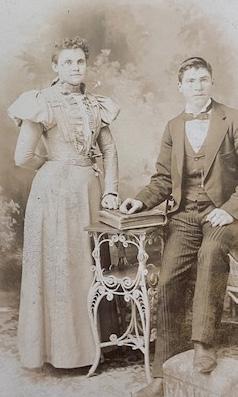
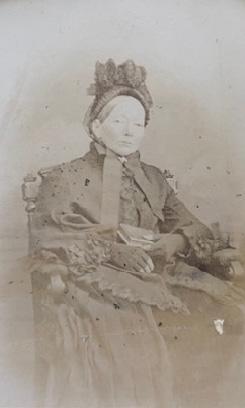
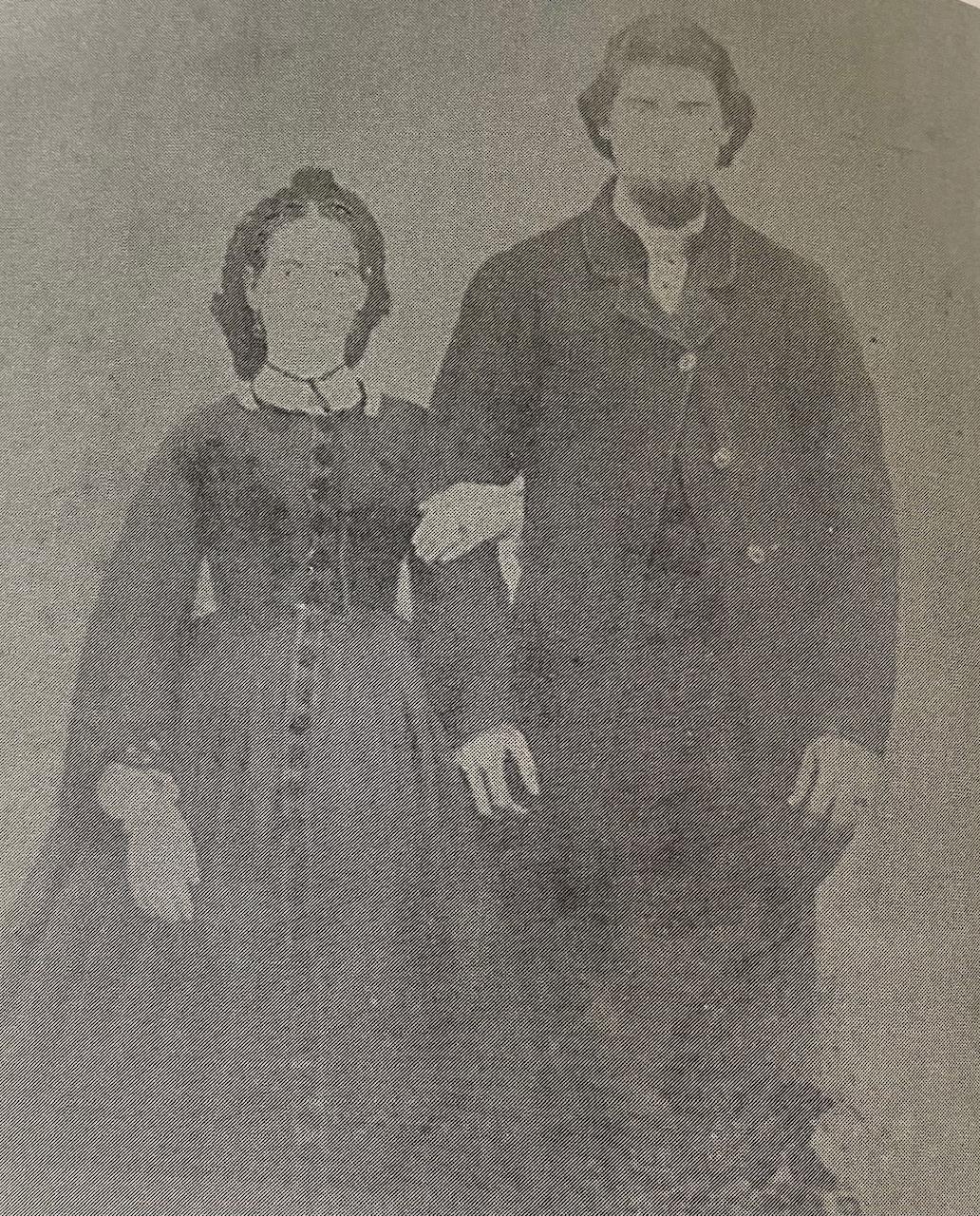
the farm was inherited by his parents, and the family moved to the Sullivan homestead permanently. “Growing up, I knew everyone,” Ron recalled. He completed Grade 12 at LCVI and, after graduating from I.E. Weldon, returned to Toronto.
While living in Toronto, Ron met and married Sharon and the family relocated to Bobcaygeon, where they raised their two daughters, Carley and Sarah.
Ron’s daughter Sarah fondly remembers catching perch from the lake in the family’s old metal boat —one of many simple but treasured memories that captured the spirit of life on the farm.
After Stephen’s passing in 1999, Ron inherited the farm, continuing the legacy of a place brimming with love, family, and cherished memories.
In October 2016, Sarah returned to the farm. Initially, she had no intention of staying long — maybe just a year at most. She was merely looking for a place to rent, and the house had been vacant for some time. However, as the years passed, Sarah’s vision for the property evolved, and she made the decision to stay and restore it. In 2021, Sarah planted an extensive garden to the left of the homestead, honouring the tradition of her family.
As I sat with her, Sarah reflected on how she always felt a deep connection to farming and gardening. “I couldn’t think of anywhere else I wanted to be,” she said. “I just wanted to be in the garden.” Today, Sarah is the proud owner of Pigeon Lake Permaculture, a farm dedicated to providing fresh, organic vegetables to her community.
“At first, it was just about doing my own thing, but now I think about how this farm has been in my family longer than Canada has been a country.” She paused and added with pride, “There aren’t many farms like this anymore.”
To this day, Ron can often be spotted at the farm, either fixing something, splitting wood, or simply watching the lake. He remains a constant presence, taking every opportunity to return. “I love this place.” LA
With thanks to the Sullivan family. Has your farm or land been in the family for over 100 years? We’d love to hear your story and recollections. Contact Laura Love at llove@kawarthalakes.ca or visit kawarthalakes.ca/moments.
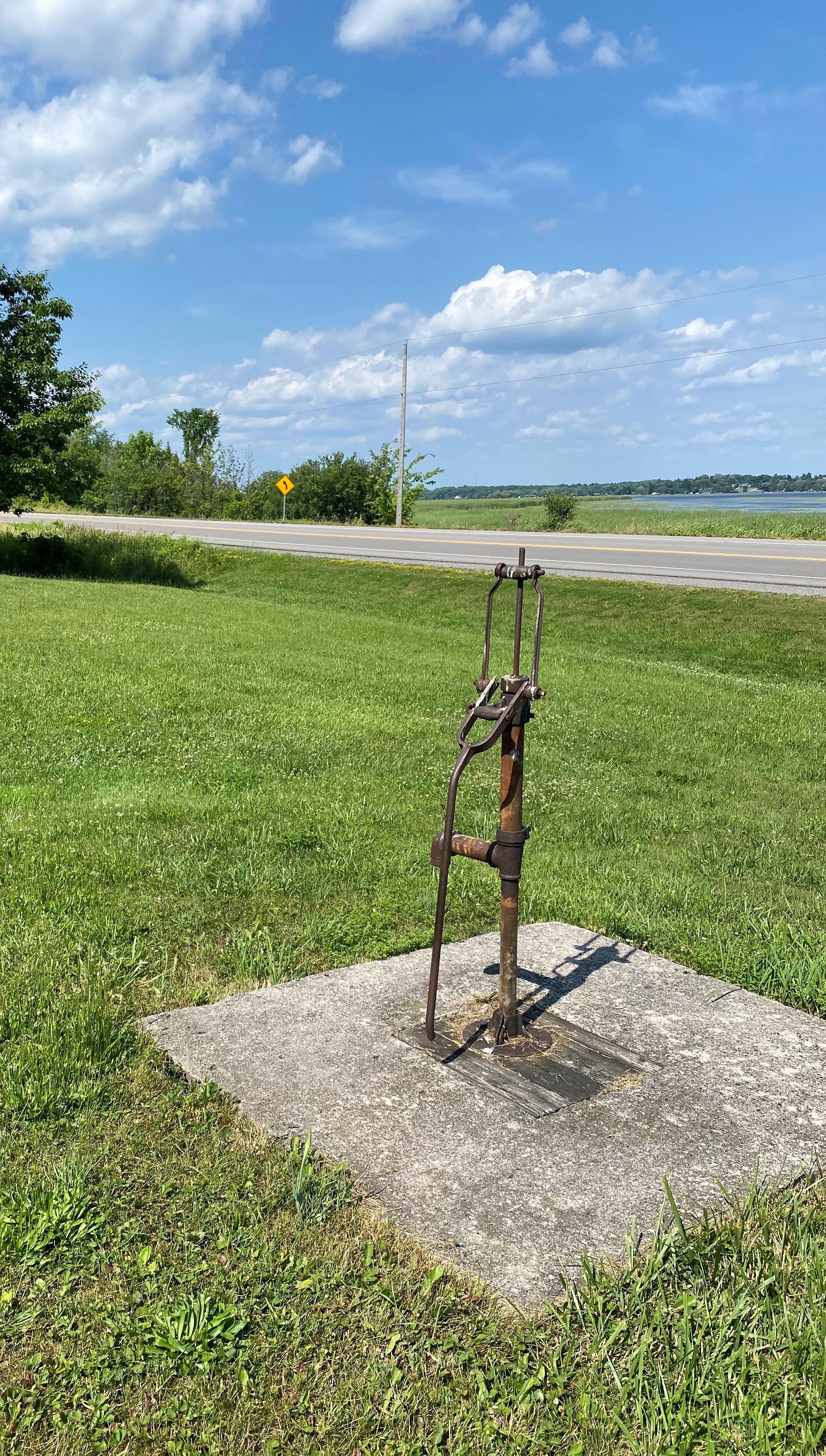


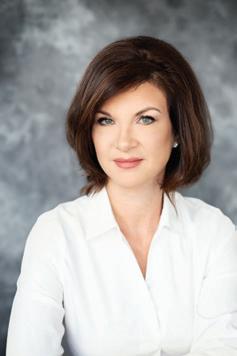
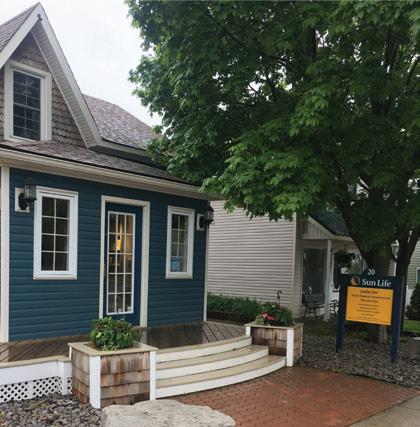


Find new adventures with Kawartha Lakes Public Library!
Kawartha Lakes Public Library invites children and families to join the 2025 Summer Reading Club! Starting Saturday, June 21, register at any library branch and get ready for a summer packed with books, crafts, activities, and adventures through coral reefs, rainforests, and everywhere in between.
Readers are challenged to read at least 15 minutes a day and track their progress in a fun passport. Along the way, they’ll earn stickers, keychains, tassels, brag tags, and other collectibles for reading and joining in library activities.
This summer, enjoy an exciting lineup of programs featuring desert cactus rock painting, mountain string art, rain stick crafting, nature-printed ornament design, polar bear cookie decorating, frog keychain creation, and ocean slime adventures. The library will host exciting guest visits such as “Touch a Truck.” Get ready to dive into our ocean immersive experience, featuring wave lighting, ocean sounds, and hands-on fun that will transport you into an underwater world!
Children who complete the end-of-summer survey will be entered to win great prizes, with bonus draws in Weeks 5 and 7. You could win a suitcase in the end-of-summer draw, perfect for future adventures!
For a complete list of offerings, check out kawarthalakeslibrary.ca.
1 Big initials in bikes and hockey gear 4 Lemon rind, in recipes
Happen to
Booze bottle abbr. 15 Snow Queen in "Frozen" 16 It's given after "because" 17 Fuel pump choice: Abbr. 18 Yoga pose for a sty dweller?
20 Root beer brand
22 The "People's Princess," familiarly
23 Editor's "leave it in" 24 Russian pancake
26 Type of verb: Abbr.
29 Sty dweller's appy pairing party?
33 Cut or copy mate, in editing 34 Numerous 35 "Kapow!"
38 See 25-Down
39 "That feels s-o-o good"
40 Bacon frying sound
41 Oxycodone, e.g.
43 Frenzy of political reporters
45 Sty dweller at college?
49 Ecuador's southern neighbour
50 Popularity gauge on Google
51 Envelope add-ins: Abbr.
53 Whom Vonnegut asked "What does it feel like to know everything?"
56 Shoelace tip
57 March-April zodiac sign, to a sty dweller?
61 ___ pinch (if necessary)
62 Funk, blues and soft rock, e.g.
63 She "talks like a man" in a Kinks' song
64 Canadian steakhouse, with "the"
65 Short gig for a bar band
66 Tchaikovsky ballet bird
67 Suffix with count, duch and baron Down
1 Bread starches, in brief
2 Golf green grippers
3 Robert Service's "The Shooting of Dan ___"
4 Central puzzle pieces?
5 "The Diary of Horace Wimp" band
6 Opposite of NNE
7 Nude sunbather's lack
8 One half of "Branjelina"
9 Like "Goosebumps" books
10 Fleeting weight loss plan
11 Anemic look
12 Where to go in England?
13 Pressurized fuel, for short
19 "Abracadabra!" stick
21 Cotton swab brand
24 Get noticed
25 Library penalty, with 38-Across
27 General ___ chicken (Chinese dish)
28 Targets of fan abuse, at times
30 Pact now called CUSMA
31 Cyclist/speedskater Hughes, and others
32 "Meh"
35 Hale's comet co-finder
36 ".. blackbirds baked in ___"
by Barbara Olson
37 Pain preceded by an aura, sometimes
39 Chequing or savings: Abbr.
42 Humorous types
43 Acts the whiner
44 Video file format
46 "Pick me! Pick me!"
47 Retract a thumbs-up on Facebook
48 Public brawls, say
52 Does' dears
54 "Got it"
55 ___ Elias (Yukon/Alaska peak)
56 "... I met ___ with seven wives"
57 In the past
58 Stimpy's sidekick
59 "In what way?"
60 "Carte" start
The Olde Gaol building that hosts the Kawartha Lakes Museum and Archives, will be undergoing significant repairs over the next several months. The repairs are to restore the building envelope of this iconic heritage building. Construction will begin this month and is expected to be finished in May 2026.
The project will include masonry repairs and repointing of mortar, replacing four windows with heritage windows, refinishing of the existing wood door facing Victoria Street, wood soffit repairs, partial roofing replacement, and removal of existing wood ramp and replacing with accessible compliant concrete ramp.
During this time temporary entrances to the Kawartha Lakes Museum and Archives may be used as the work takes place in different areas around the building. The Kawartha Lakes Museum and Archives will remain operational throughout the duration of work.
Kawartha Lakes has taken on this project to restore this historically significant building. Keeping it functional for occupants and visitors for many more years to come.
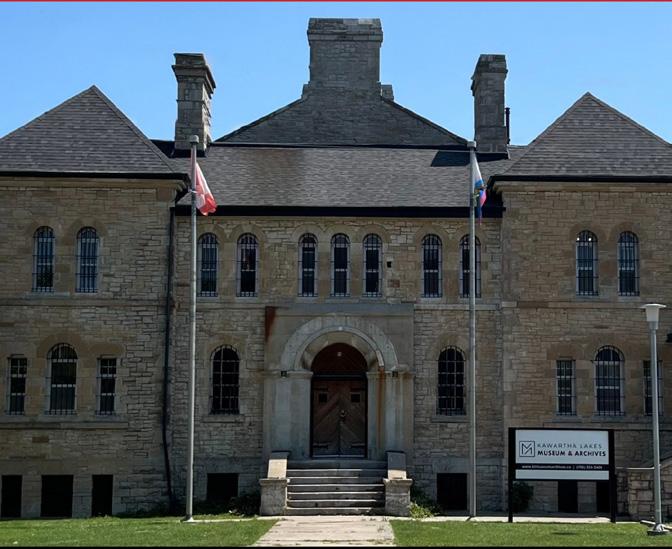
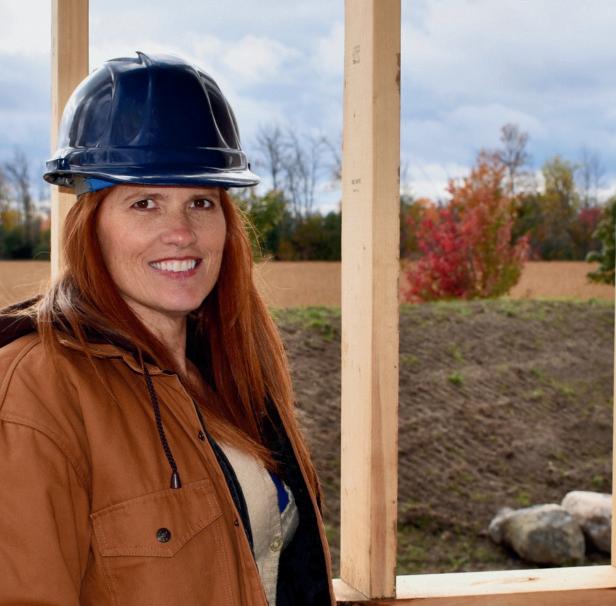







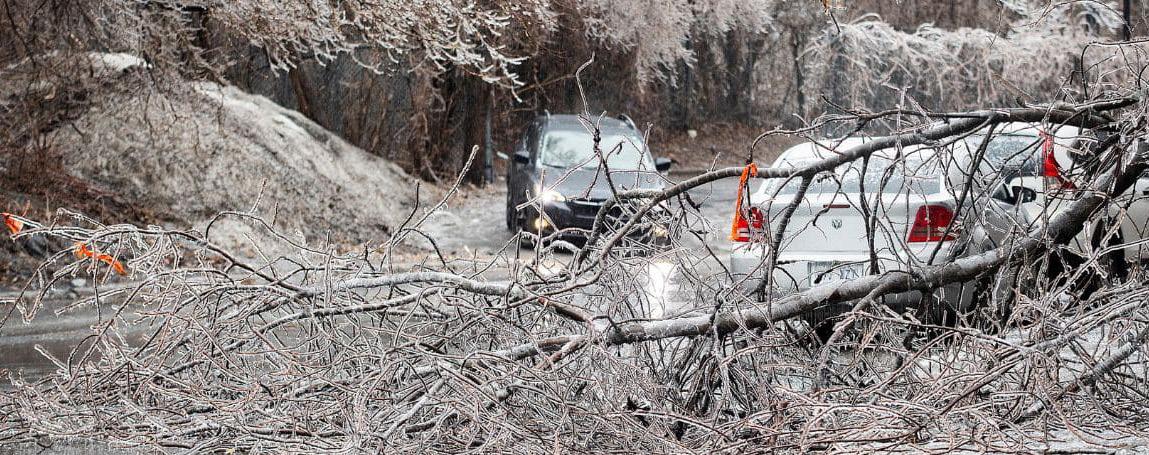

August 14, 2003: My family was just leaving Ontario Place when the park lights went out. We quickly learned we weren’t alone. More than 50 million people lost power in Ontario and the northeastern U.S. in what remains the largest power outage in North American history.
The cause – a heat wave spiked demand at an electrical utility in Ohio causing power lines to sag into trees. The lights were back on in about 30 hours.
2018: Some might remember a mid-April ice storm and early-May wind storm that knocked out the lights for a couple of days.
2022: We also remember the derecho storm that killed power for one million people here.
March - April 2025: My family was in the dark for six days because of the largest ice storm Ontario had seen since 1998. We were lucky. Friends of ours were out for 12 days.
Then a wind and rain storm hit at the end of April. This time we were powerless for only one day. Ontario was at the north end of a derecho storm sweeping across the U.S. from Ohio to New England caused by high daytime temperatures clashing with a cold front.
The increasing severity of storms has been predicted for some time now because of global heating. To minimize those scary global temperatures the International Energy Agency says we need to triple renewable power, manage an orderly decline of coal, oil and gas use and quickly double the rate of energy efficiency.
Our new government has been talking about a cross-Canada energy corridor that includes sharing electricity across provincial borders. That would increase energy efficiency and self-reliance. And, as a Stanford University study showed last year, cross-border electricity sharing could cut outage risks by 40 per cent.
Unfortunately, it can’t prevent storms from felling trees and power lines. But it can smooth out peaks in electricity demand on those scorching days when many households crank up the air conditioning. Summer is Ontario’s most challenging season for meeting spikes in demand, so cross border sharing can prevent summer brown-outs or blackouts. In fact, we already get some power from Quebec in the summer, while they draw on Ontario power when their demand peaks during the winter.
At home we can cash in on many tips out there for saving us money while reducing the load on the grid and curbing pollution.
• Install LED light bulbs if you haven’t already. And turn off the lights when you leave the room.
• Unplug electronics like the TV or computer when not in use. Make it easier by plugging multiple devices into a power bar that turns off with one switch.
• Minimize using AI like ChatGPT. Google searches consume 10 times less power.
• Wash clothes in cold or warm, not hot, water. Then dry them on the line or using drier balls.
• Draw the drapes to reduce the sun’s heat in summer and add a bit of insulation against the cold on winter nights.
• When replacing appliances, look for the Energy Star label. They can use 25-35 per cent less power than 15-yearold appliances. And if the air conditioner goes – replace it with an energy efficient heat pump.
Hydro One offers many more ways to save energy. Now, if they could only bury those power lines so the lights don’t go out during a storm.


Imagine for a moment that you are a die-hard fan of the Toronto Maple Leafs (perhaps you already are). Now imagine how you would feel if the Winnipeg Jets, the Montreal Canadiens, and two-thirds of the Leafs decided to amalgamate, forming a new hockey team representing all of central Canada. You can bet there would be controversy, with the faithful members and adherents of Leafs Nation upset about their storied traditions being absorbed into a new and untested franchise.
This analogy may be a bit of a stretch, but it does speak to how members of The Presbyterian Church in Canada felt 100 years ago, when two-thirds of their denomination merged with the Methodist and Congregational churches to form The United Church of Canada (a process that formally culminated on June 10, 1925, even though it began well before that).
Why did church union happen, and how did the controversy play out here in Kawartha Lakes? To answer these questions, we must first understand the rationale for and against union. With roots in the Protestant Reformation of the 16th century – and subsequent developments in the 17th and 18th centuries – the three churches did after all have much in common.
But there were important differences that, while seemingly trivial to us today, were deal-breakers in the conversations precipitating church union.
Unlike Methodists, who believed that humans could actively choose to resist God’s grace and calling, Presbyterians affirmed otherwise. “To Presbyterians of those days,” wrote the late historian Dr. John Webster Grant in his book Divided Heritage: The Presbyterian Contribution to The United Church of Canada, “any suggestion that God’s power might be limited seemed a slight to the divine majesty.” Moreover, it was fashionable among various Protestants in the early 20th century to question the historicity of some stories in the Bible; there was also concern that the Methodist emphasis on personal religious experience

The Rev. Finlay H. McIntosh left his pulpit at St. Andrew’s Presbyterian Church to join Cambridge Street United Church in 1925. He later returned to CSUC as minister emeritus and served in that role until his death in 1947. St. Andrew’s Presbyterian Church collection.

would undermine church tradition and the authority of scripture. These factors influenced much of the opposition to church union, as did resentment over a new denomination being legislated into existence by the Canadian Parliament.
There were, however, good arguments put forward in favour of union. Chief among these was the belief that more could be accomplished in the domestic mission field if the major Protestant churches collaborated and cooperated, rather than competed, with each other. Canada’s Presbyterians and Methodists were both extremely active in social justice initiatives (and in their shared commitment to temperance), so union seemed like a natural next step.
Such was the thinking of the Rev. Finlay H. McIntosh and his pro-union parishioners at St. Andrew’s Presbyterian
Church, Lindsay, in the opening weeks of 1925. McIntosh had occupied the pulpit at St. Andrew’s since 1915, and was a well-liked, popular preacher. Keen to avoid rocking the boat, McIntosh would insist in his final sermon at St. Andrew’s on Sunday Feb. 8, 1925, that, “When over a year ago this stormy controversy broke upon us locally, I pledged myself before God not to make this matter an occasion of personal feeling against anybody.”
McIntosh might have made his points, but during the closing months of 1924, he was overshadowed by a well-organized anti-union lobby. “You have only six months in which to say what the future of your congregation will be – no chance after that,” warned an ominous advertisement in the Oct. 22, 1924 edition of The Lindsay Daily Post. Those in favour of remaining with the “continuing
Presbyterian Church” organized special meetings to which high-profile Presbyterian clerics (such as the Rev. Stewart Parker of St. Andrew’s Church in downtown Toronto) were invited to make the case against going into union. Feelings ran high, and one G.A. Lucas – himself a supporter of the continuing Presbyterians –wrote a letter to the editor of the Post in which he stated: “God help any church if the votes are to be cast by those whose hearts are embittered by jealously, suspicion, and hatred.”
Those votes were cast over the space of two weeks in January 1925, starting on Jan. 14 and ending on Jan. 27. The following week, it was revealed that 178 votes had been cast in favour of union, while 362 were against. St. Andrew’s – and all but two of the other eight Presbyterian parishes in what is now Kawartha Lakes – would remain Presbyterian, but many prominent parishioners (including a young lawyer named Leslie Frost) would not. Cambridge Street Methodist Church boldly renamed itself “First United Church,” a name it would retain until around 1933, and welcomed the Rev. Finlay McIntosh as its associate pastor.
Over time, the rift of 1925 healed and today the members of St. Andrew’s and Cambridge Street Churches freely mingle at events organized by one or the other. And that’s exactly how it should be, according to the Rev. Bob Quick, who served as associate minister at St. Andrew’s from 2008 through 2022. “There is a quote often attributed to the Puritans that I have tried to live by over 50 years of pastoral ministry in several denominations,” says Quick. “‘Unity in essentials, liberty in non-essentials, charity in all things.’ While specific theological or doctrinal points may vary, believers of different denominations should strive for unity, allowing for diversity in other areas to form something bigger.” LA

By Trevor Hutchinson Contributing Editor
There’s a small chance that long-time readers of this page might remember me talking about Peter Wohlleben’s 2016 book The Hidden Life of Trees: “a highly entertaining — albeit anthropomorphic — book that postulated that trees communicate with each other” in tough times through their root systems.
But as I walked down the street, I was not thinking of the recent devastation to the tree canopy, but rather the beautiful resilience of nature. Not to sound like some hippy, but the sight of the trees carrying on, despite injury gave me a measure of hope.
I had to search whether or not I did in fact write that: I find fact and intention seemed to get mixed in the blurriness of age. But according to the Google machine, I mentioned that book in 2019. And with new data from the Advocate’s reader survey, I’m thinking that may ring a bell with some readers. I mean not to brag, but the data suggests that consumers prefer — ever so slightly — reading this column to reading the classified page. I’m not in the same league as say the back of your cereal box, of course. But the classified page is important and I’ll take that. I’d run a victory lap, if I could run.
I was thinking about that book as I was walking in a tree-covered neighbourhood recently. I found myself in awe of the new growth that only comes in spring. To the untrained eye, the effects of the devastating
ice storm just two months ago was less noticeable than the splendour of the greenery. As we know, the damage was extensive and staggering. According to the city, one contractor alone took approximately 5,000 cubic yards of branches out of Lindsay and another took more than that out of both Omemee and Bobcaygeon. As of mid-May, there are more than 16,000 cubic yards of wood chips from the 17,000 citizens who brought tree debris to city landfills. The final numbers, which will quantify both the severity of the storm and the city’s amazing response, will be mind-blowing.
But as I walked down the street, I was not thinking of the recent devastation to the tree canopy, but rather the beautiful resilience of nature. Not to sound like some hippy, but the sight of the trees carrying on, despite injury gave me a measure of hope.
Wohlleben postulated that tree families, much like human ones, do better as a group. They protect each other and live much longer than solitary trees, who statistically do not do as well nor live as long as trees that are together. This too gave me solace.
For several people in our community, May was a sad month. There were high-profile, unexpected losses that affected many people deeply. But as it always does, our community gave tribute, supported those most closely affected and gathered together, strengthened by that togetherness. And that’s when we are at our best, even in sadness. When we are like the trees that continue, despite injury or devastation, we just survive better together.




Collector Car & Truck Appraisals
MTO Appraisals & Vehicle, VIN/Ownership Corrections.
Call Ron @ 705-8782372. Please visit RJVintageGarage.com. Available - Lindsay & Area.
Collector Car & Truck Appraisals
MTO Appraisals & Vehicle, VIN/Ownership Corrections.
Call Ron @ 705-8782372. Please visit RJVintageGarage.com.
Fences, Gates, Railings & Verandas
Available - Lindsay & Area.
New wooden fence installation
Wooden fence repairs & staining
Perfect post holes
Great quality, pricing & reliability
Stephen 647-9271580
Fences, Gates, Railings & Verandas
New wooden fence installation
Wooden fence repairs & staining
Perfect post holes
Great quality, pricing & reliability
Stephen 647-927-1580

Furniture, signs, jewellery, watches, coins, china, military items, paintings, records, books, old metal toys, wood decoys, snow shoes, paddles & more.
For Rent - 1 and 2 bed units from $1,800 & up. Heat, hydro & water is included. Adult building in Lindsay. Call 705324-9381.
Bob Carruth
705-887-1672
Furniture, signs, jewellery, watches, coins, china, military items, paintings, records, books, old metal toys, wood decoys, snow shoes, paddles & more.
Bob Carruth
705-887-1672
For Rent - 1 and 2 bed units from $1,800 & up. Heat, hydro & water is included. Adult building in Lindsay. Call 705324-9381.

December 12, 1940 – May 7, 2025.
We Buy Vintage... Vinyl Records, Comics, Jewellery, Glass, China, Pottery, Toys, Sports & Collectibles. We Make House Calls. Cash Paid. Robert & Penny. 705-324-2699. howlingdog.rocks
We Buy Vintage...
Classic & Vintage Cars & Trucks
Call Mark 613-360-2699
Vinyl Records, Comics, Jewellery, Glass, China, Pottery, Toys, Sports & Collectibles. We Make House Calls. Cash Paid. Robert & Penny. 705-324-2699. howlingdog.rocks
Classic & Vintage Cars & Trucks
Call Mark 613-360-2699
Burns’ Snow Removal & Lawn Care Ltd.Grass cutting, fertilizing, trimming, organic topsoil & spring cleanup. Commercial & Residential. Fully insured. Call David. E. Burns 705-324-8154
Burns’ Snow Removal & Lawn Care Ltd.Grass cutting, fertilizing, trimming, organic topsoil & spring cleanup. Commercial & Residential. Fully insured. Call David. E. Burns 705-324-8154
McKenzie’s offers all aspects of outdoor maintenance interlock lift and re level fencing gutter cleaning lawncare snow removal 705-934-4333. Free estimates.
McKenzie’s offers all aspects of outdoor maintenance interlock lift and re level fencing gutter cleaning lawncare snow removal 705-934-4333. Free estimates.
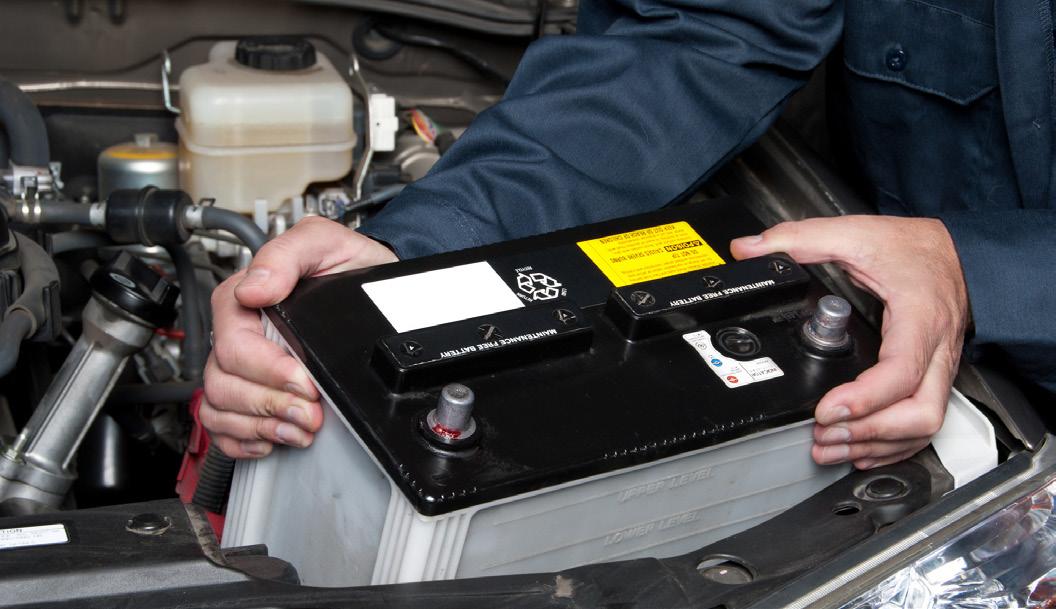
It is with deep sadness that we announce the peaceful passing of Dennis from Alzheimer’s disease. Beloved husband of Zarina (née Dupley) and Maureen (née Chan-ASue, deceased). Loving father to Maria (Stephen) and beloved stepfather to Khaled (Maita), Omita, and Ayesha (Halsey). Extremely proud grandfather to Aliyah and James. Dennis and Zarina moved to Lindsay from Toronto with their family in May 2021, starting a new life in a multigenerational home. Dennis participated in the Minds in Motion program run by the amazing team of Melissa and Jen from the Alzheimer Society of Peterborough, Kawartha Lakes, Northumberland, and Haliburton. Dennis was a regular member of the Silver Lights Day Program, and in June 2024, became a resident of the Silver Lights “Just Like Home” Senior Retreat, to better suit his care needs. The family wishes to thank Tammy Adams, her family and staff at Silver Lights for caring for Dennis with love, respect and good humour, creating an environment where our family could spend quality time and make happy memories. We are grateful to the nurses, doctors, occupational therapists and staff at Ross Memorial Hospital where Dennis was hospitalized in 2024 and 2025. The nurses always treated him with good humour and the care team made the transition to long term care easy for the family. Dennis was a kind, warm, and fun-loving man who touched more lives than he realized. He was an incredible husband, father, family man, and friend. Most of all, we will miss his bear hugs and sense of humour and will carry his memory forever in our hearts.
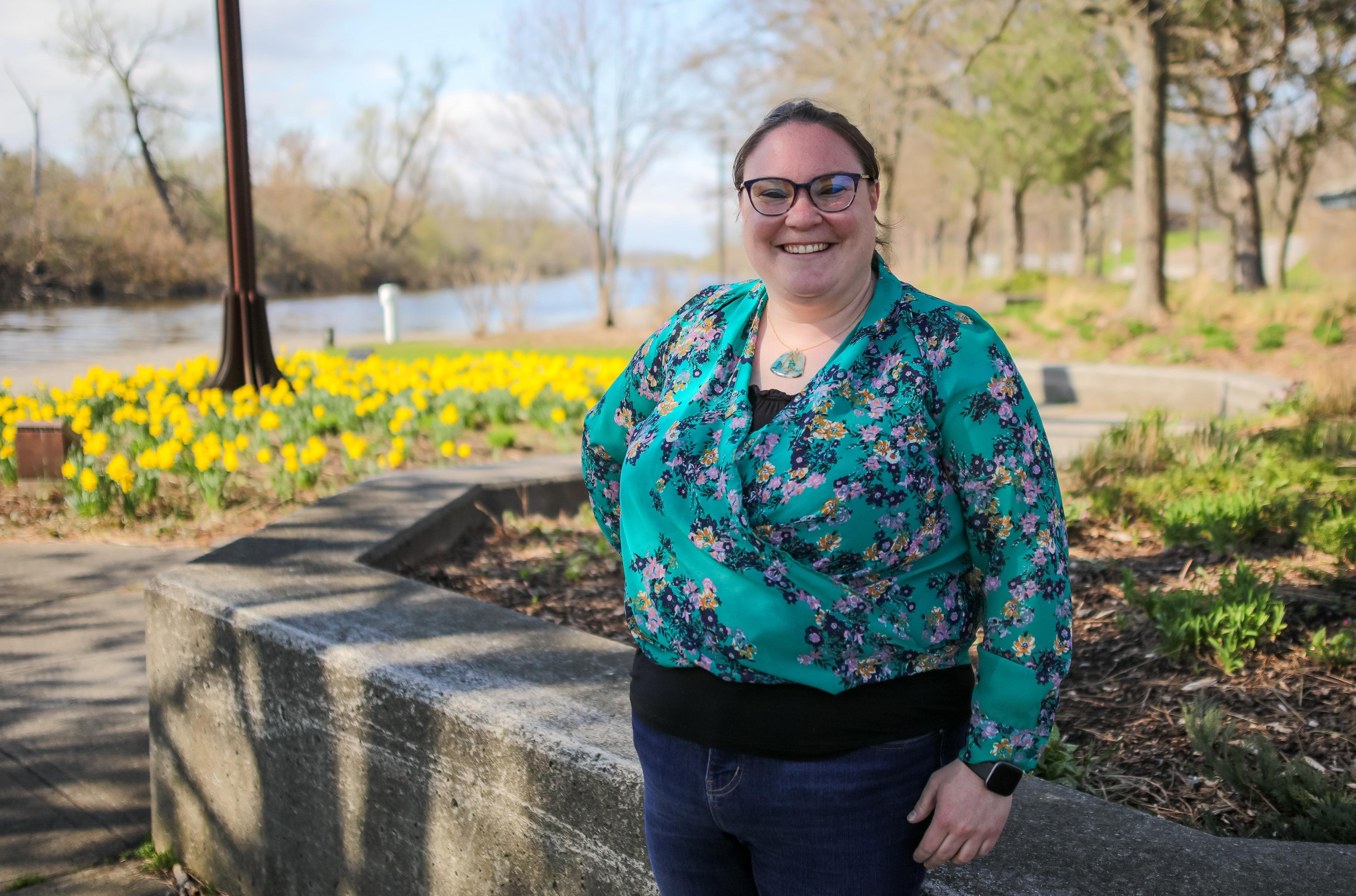
BRITTANY SNOWDEN moved to Lindsay in 2022.
Lindsay Advocate: Why did you choose to move here?
SNOWDEN: We looked at several homes but really liked the property that we bought. The neighbourhood felt welcoming, and I liked the amount of green spaces that Lindsay has to offer (parks, trails, and nature spaces). It felt more like a small town, as opposed to Peterborough, which has become so busy. We also enjoyed dining in Lindsay before moving here. It felt more rural than most cities we had looked at.
Lindsay Advocate: What is your favourite thing about Kawartha Lakes so far?
SNOWDEN: All of the amazing indoor and outdoor recreation opportunities in Kawartha Lakes. There is something going on almost every weekend! Some favourites include: Ken Reid Conservation area, the Victoria Rail
Trail, community gardens, the Lindsay Recreational Complex, the Lindsay Library, Lindsay farmers’ markets, Century Cinemas, Lindsay Drive-In, Festival of Trees at Kawartha Settlers’ Village, renting kayaks through Parks and Recreation, Home shows and craft shows at the LEX, Door’s Open, the Lindsay Fair, annual Soupfest, shows at Flato Academy Theatre, downtown events like the Holiday Passport and the soup and loaded fries events, and so many more. I also love reading the Advocate!
Lindsay Advocate: What are your favourite local restaurants or shops?
SNOWDEN: Corner Bites, Pie Eyed Monk, Olympia, St. Dave’s Diner, Muster Point in Bobcaygeon, Kindred, Sweet Kitchen, Home Hardware Lindsay, Hill’s Florist and Greenhouses, Giant Tiger.
Lindsay Advocate: What do you think is missing from Kawartha Lakes?
SNOWDEN: Concerts in the park (notwithstanding the ones in Victoria Park), and a nice patio or place to get a coffee or ice cream beside the river.
Lindsay Advocate: How were you involved in your previous community and how might you like to get involved in Kawartha Lakes?
SNOWDEN: I’ve gone to more community events in the last three years in Lindsay than I did in the 30 years before that in my previous community. I would like to volunteer more and help out with events.
Are you new in town? If you moved to Kawartha Lakes within the past two years and want to be featured here, email us at info@lindsayadvocate.ca.












0 5 - 7 3 8 - 2 0 3 7 g l o b u s t h e a t r e . c o m READ MORE ABOUT OUR SEASON!

